Crusader Weeding Out Environmental Racism
By Stacy M. Brown NNPA Newswire Senior National CorrespondentVernice Miller-Travis has consistently recognized racism, including how race has played a significant role in environmental policy.
She’s the vice chair of Clean Water Action’s board of directors, executive vice president for environmental and social justice at Metropolitan Group, and co-founder of We Act for Environmental Justice.
Miller-Travis said it’s her job to analyze data from the U.S. Environmental Protection Agency’s list of national priorities.
In that way, she’s able to keep abreast of hazardous waste sites in the United States, including the ones that pose an immediate health and environmental threat.
“You get to see the pattern,” Miller-Travis told National Newspaper Publishers Association (NNPA) President and CEO Dr. Benjamin F. Chavis Jr.
“The pattern around the racial composition of who lives in a particular place in proximity to a hazardous waste site is not random,” she said during a riveting conversationinside NNPA’s state-of-the-art television studios in Washington.
The full discussion will air on Chavis’ PBS-TV Show, The Chavis Chronicles.
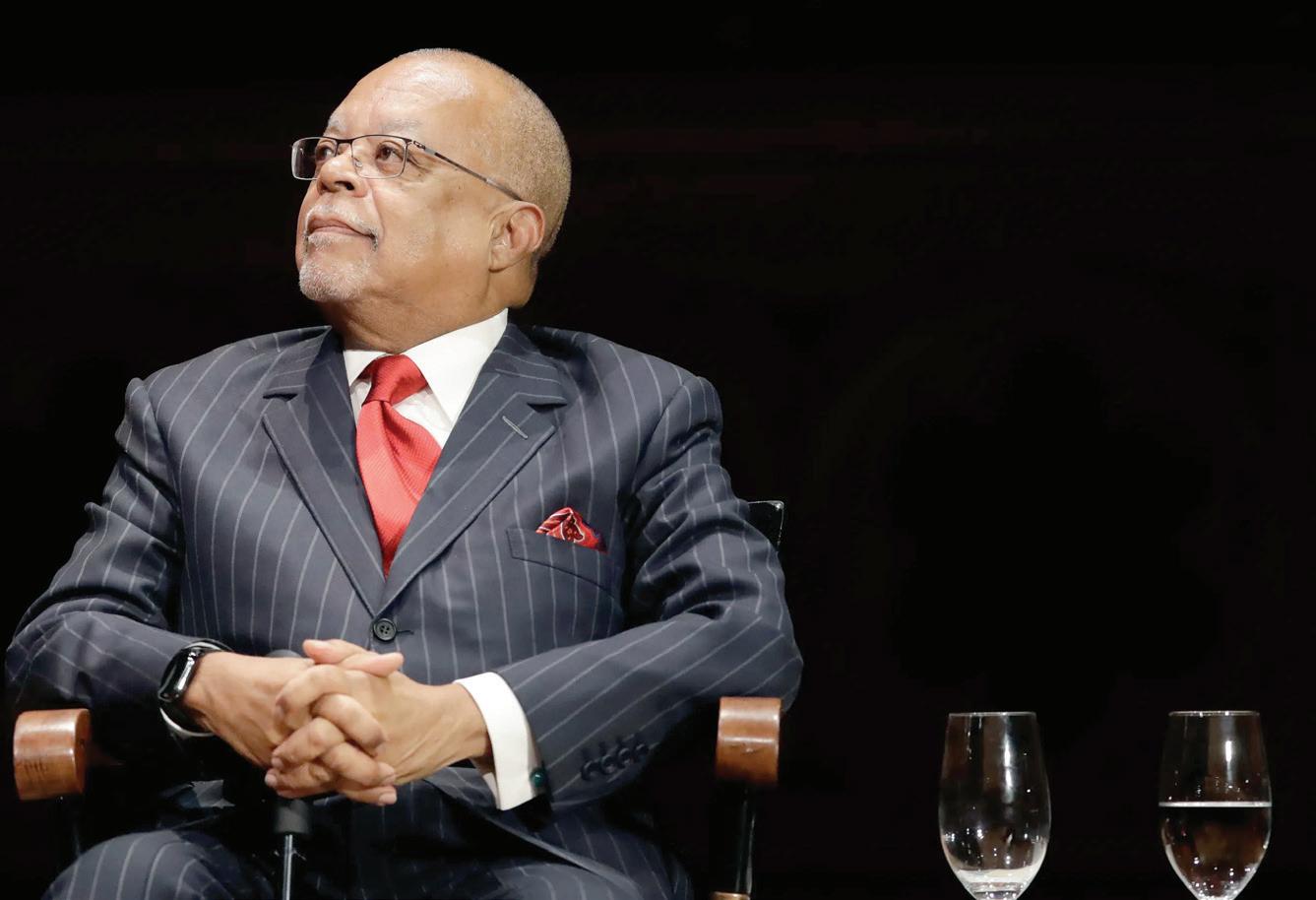
And when there’s any pushback, Miller-Travis stands at the ready.
“When they ask whether they’re being accused of being racist, I tell them that what I’m saying is that your policies you utilize have an unequal impact that people of color are always adversely affected, not white people.”
Born in 1959 at New York’s Harlem Hospital, where both her parents worked, Miller-Travis said she spent a lot of time at the famed health center.
She attended Barnard College before earning a political science degree from Columbia University’s Schoolof General Studies.
“I started as a researcher working for the civil rightsdivision of a small Protestant Church known as United
Vernice Miller-Travis
Black Californians Prioritize Health, While System Fails to Prioritize Black Californians
California Black Media
The California Health Care Foundation (CHCF) has released a study that found Black Californians are highly engaged with their health care, are active in advocating for their health and have strong and clear opinions about how the healthcare system can be improved.
“I think it’s surprising because of the pervasive myths about noncompliance among black patients” said Shakari Byerly, managing partner of EVITARUS, a Los Angeles based Black-owned public opinion research firm who
designed, conducted and analyzed the research. “The fact is that our traditional foods may not be as healthy. While that may have some degree of anecdotal resonance, what we’re seeing broadly is that people are working very hard.”
The study was staged in three different phases intended to get varying levels of insight from different cohorts of Black Californians.
Phase one consisted of hourlong interviews with 100 individuals to understand their views on health, perceptions of discrimination, and their vision for an ideal healthcare system.
In Phase Two, the researchers conducted 18 segmented focus groups to explore structural issues in the health care system.
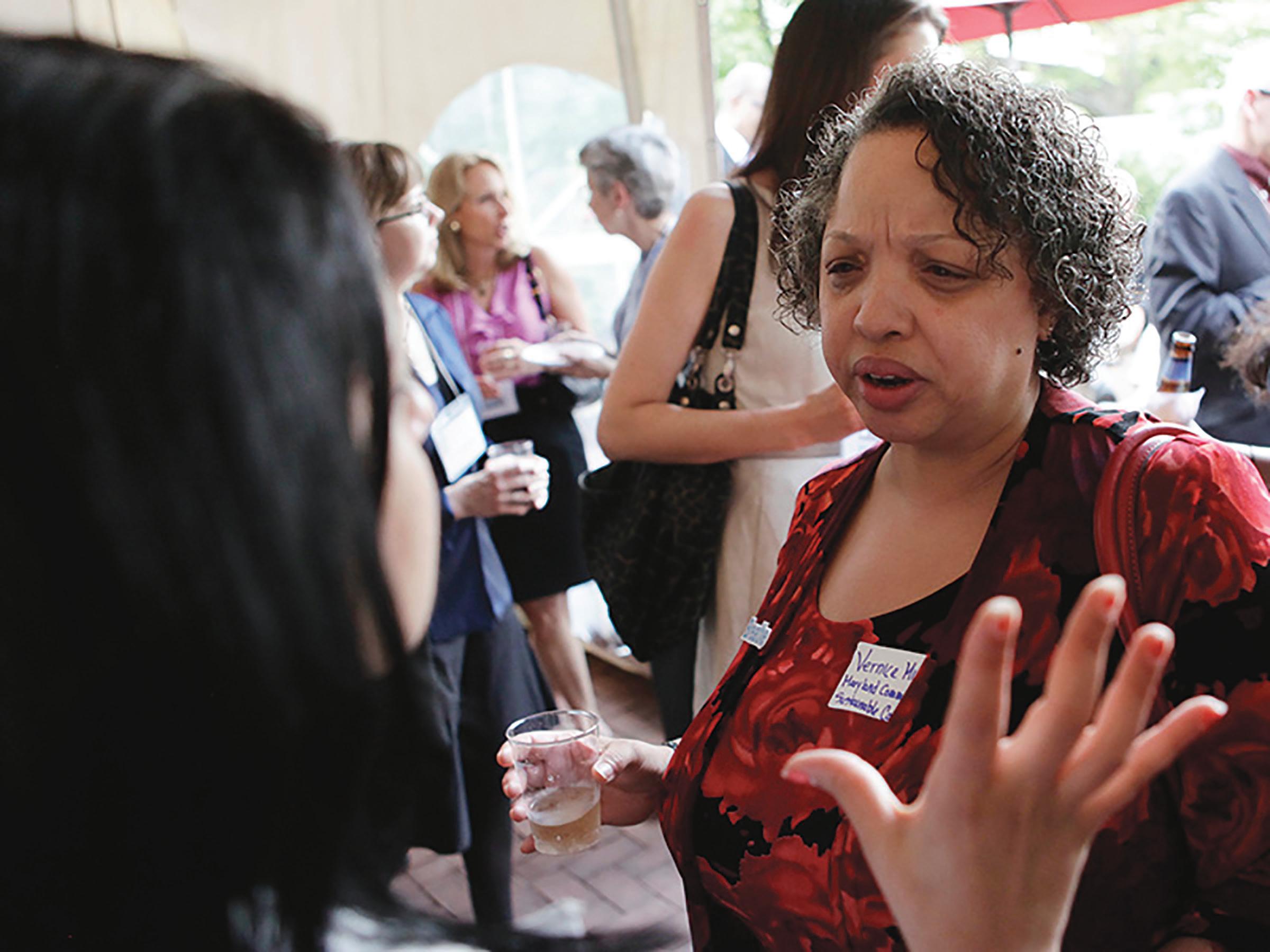
In Phase Three, 3,325 Black Californians were surveyed to determine how well the findings in phases one and two captured and represented the views of the general population of Black Californians.
The data that was collected showed that 90% of Black Californians say that they have health insurance coverage, and 92% of respondents said that they have seen a doctor or healthcare provider in the last year. Most
Votercade with Goal of 10 Million More Black Voters
By Stacy M. Brown NNPA Newswire Senior National Correspondent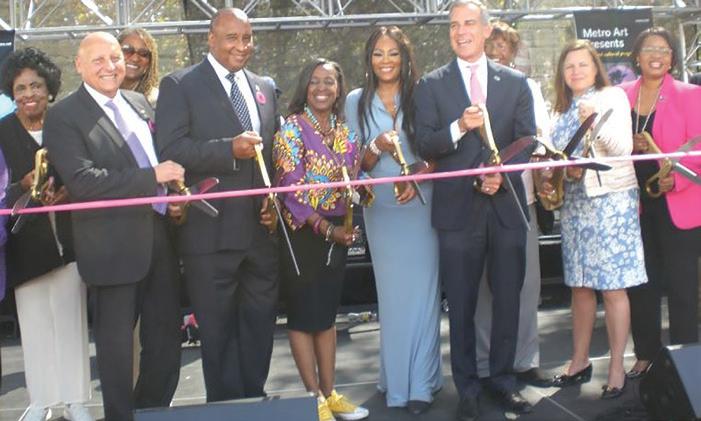


The bar is set high: 10 million more Black voters.
That’s the goal as the Transformative Justice Coalition (TJC), the National Newspaper Publishers Association (NNPA), Rainbow Push, the Hip Hop Caucus, and others set out on a bus tour across the nation to blunt voter suppression and misinformation ahead of the allimportant midterm elections.

“The buses are rolling … Minneapolis is the first stop,” declared Barbara Arnwine, the president and founder of the TJC, an organization known for its contributions to critical justice issues.
“We believe voting is a celebration,” Arnwine continued during a lively news conference at the Press Club in Washington, D.C.
The conference included remarks by Attorney Daryl Jones, NNPA President, and CEO Dr. Benjamin F. Chavis, Jr., Rainbow Push Coalition Executive Director Bishop Tavis Grant, Black Voters Matter Co-Founder Cliff Albright, African American Policy Forum Executive Director Kimberlé Crenshaw, National Organization of Concerned Black Men CEO Dr. Karen McRae, Virginia K. Solomón of the League of Women Voters, and Hip Hop Caucus Executive Director Attorney Tanya Clay House.
“We want people to celebrate when they vote,” Arnwine insisted.
“We call it a celebration for every time we do a votercade. We have a Celebration Village.”
Arnwine said in one city; the mayor informed the coalition that voter turnout doubled after the votercade visited.
“We went to another area in the poorest zip code in Milwaukee – one of the poorest in the nation,” Arnwine continued.
“They had such a small polling site and didn’t expect anyone to turn out. But, when we finished, they had more people vote in that one day after the votercade than typically during the entire early voting season.”
Chavis, who has pushed the hashtag #10millionmoreblackvoters, reminded everyone that the midterms were just a few weeks ago.
With photos of the late Georgia Democratic Rep. John Lewis blanketing the Press Club for the news conference, Chavis called the coalition’s mission good trouble.
“We are going to all the major states, places where we know we can make a difference,” Chavis declared.
“This tour is designed to make sure we awaken a lot of the sleeping giants in our community.”
He continued:
“We believe that we can get 10 million more Black voters. That’s a large number, but we believe that number could make a difference. Democracy is on the ballot on November 8. Racial justice is on the ballot on November 8. Climate justice is on the ballot, environmental justice is on the ballot, economic justice, and equity is on the ballot, and preventing far right-wing groups from banning votesis on the ballot.”
Arnwine added that the 25-city Arc of Voter Justice Tour is designed to ensure everyone understands that citizens’ right to vote is their voice.
During the votercade, participants will register to vote and check their voting eligibility while enjoying good food, music, games, and banned books as the coalition seek to transform voting and the voting experience.
“A great democracy does not make it harder to vote than it is to get an assault weapon,” Bishop Grantdemanded.
“What is so dangerous about Black and Brown people who vote? What’s so dangerous about standing in line with a bottle of water or food or showing up early to vote?”
The Bishop said the danger is that “it shifts the power scale, and the have-nots have an opportunity to have their fair share.”
“A right is not something someone gives you. It’s something that someone cannot take away from you. That’s what this is about. It’s about restoring the right and the dignity of the voter. If your vote didn’t matter, suppression wouldn’t try to suffocate it. We need 10 million more voters.”
PA Apologizes for Experiments on Black Inmates
PHILADELPHIA (AP) – The city of Philadelphia issued an apology Thursday for the unethical medical experiments performed on mostly Black inmates at its Holmesburg Prison from the 1950s through the 1970s.
The move comes after community activists and families of some of those inmates raised the need for a formal apology. It also follows a string of apologies from various U.S. cities over historically racist policies or wrongdoing in the wake of the nationwide racial reckoning after the killing of George Floyd by a Minneapolis police officer.
The city allowed University of Pennsylvania researcher Dr. Albert Kligman to conduct the dermatological, biochemical and pharmaceutical experiments that intentionally exposed about 300 inmates to viruses, fungus, asbestos and chemical agents including dioxin – a component of Agent Orange. The vast majority of Kligman’s experiments were performed on Black men, many of whom were awaiting trial and trying to save money for bail, and many of whom were illiterate, the city said.
Kligman, who would go on to pioneer the acne and wrinkle treatment Retin-A, died in 2010. Many of the former inmates would have lifelong scars and health issues from the experiments. A group of the inmates filed a lawsuit against the university and Kligman in 2000 that was ultimately thrown out because of a statute of limitations.
Philadelphia Mayor Jim Kenney said in the apology that the experiments exploited a vulnerable population and the impact of that medical racism has extended for generations.
“Without excuse, we formally and officially extend a sincere apology to those who were subjected to this inhumane and horrific abuse. We are also sorry it took far too long to hear these words,” Kenney wrote.
Last year, the University of Pennsylvania issued a formal apology and took Kligman’s name off some honorifics like an annual lecture series and professorship. The university also directed research funds to fellows focused on dermatological issues in people of color.
Racism Sidelines
2 CA High School Football Teams
SACRAMENTO, Calif (AP) – Two recent racist incidents involving a mock slave auction and violence against Black people have sidelined two Sacramentoarea high schools for the remainder of the varsity football season.
The Sacramento Bee reported Monday that Amador High School canceled the rest of its season because of a Snapchat group named “Kill the Blacks” and that River Valley High School in Yuba City forfeited its Friday game after a TikTok video created by players involving a mock slave auction surfaced.
River Valley also forfeited the remainder of its season. With varsity players out after the video of them acting out a slave auction surfaced, the team doesn’t have enough players, KCRA-TV reported over the weekend.
The incidents in September follow one in March where an El Dorado Hills’ Oak Ridge football player heckled a Black high school soccer player with ape sounds, according to The Bee.
“Re-enacting a slave sale as a prank tells us that we have a great deal of work to do with our students so they can distinguish between intent and impact,” the Yuba City Unified School District said in a release.
The three schools are in different school districts all outside of Sacramento, which is California’s capital city. All the schools have small percentages of Black students, the news outlet reported.
Stars Set for Black Entrepreneurs Day
LOS ANGELES (AP) – Venus Williams, Spike Lee, Tracee Ellis Ross, Shaquille O’Neal and Killer Mike are among those set to participate in a celebration of African American business success and opportunity.
Black Entrepreneurs Day, founded and organized by “Shark Tank” panelist and FUBU chief executive Daymond John, will be held Oct. 27 at New York City’s Apollo Theater and streamed live on Johnson’s Facebook page and BlackEntrepreneursDay.com.
In a statement, John said his goal for the third annual gathering remains to “inspire, educate, learn from and celebrate those that are hustling, pushing forward, pursuing their dreams and, in many cases, thriving.”
Beginning at 7 p.m. EDT, the night will include John’s one-on-one discussions with celebrity and business guests; panels on topics including building generational wealth and elevating creativity and access, and a “pitch competition” for nascent entrepreneurs. Rapper Big Sean will close the Chase-presented event with a live performance.
Black business owners and entrepreneurs can apply for $25,000 grants from the NAACP Powershift Entrepreneur Grant program created by John, with the event website open for applications through 11:59 p.m. EDT Wednesday, Oct. 12. More than $500,000 in grants has been given, according to organizers.
“Black Entrepreneurs Day provides an invaluable resource to a community that is historically overlooked when it comes to resources and funding. It is truly economic inclusion for us, by us,” NAACP President and CEO Derrick Johnson said in a statement.
John, one of the original stars of ABC’s “Shark Tank,” founded the global lifestyle brand FUBU and is a motivational speaker and author.
Vice President Harris Announces Slate of Actions to
Help Black and Minority-owned Small Businesses
By Stacy M. Brown NNPA Newswire Senior National CorrespondentVice President Kamala Harris used her time at Freedman’s Bank Forum to announce new public and private-sector efforts to advance racial equity.
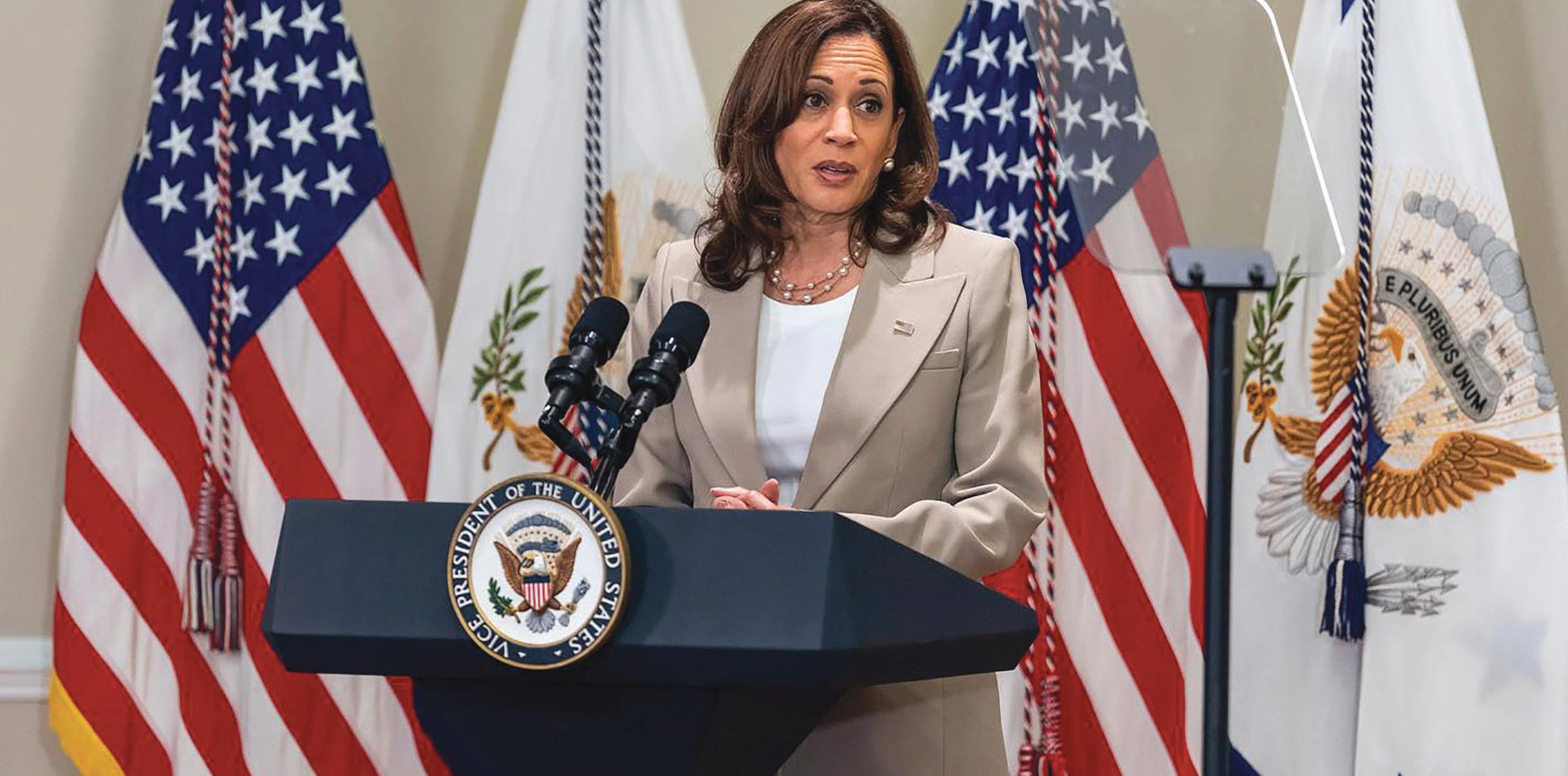
Harris said the administration recognizes the continued difficulty that Black-owned businesses have in finding funding.
She acknowledged that they routinely are the first to suffer during an economic downturn.
Among a slate of new actions by the Biden-Harris administration, the vice president announced that the Small Business Administration (SBA) would propose a rule this fall to expand its lender base by lifting the moratorium on new Small Business Lending Companies.
The action would allow new lenders to apply for a license to offer SBA-backed 7(a) small business loans.
Also, the Minority Business Development Agency (MDBA) will issue a $100 million notice of funding opportunity to provide technical assistance grants for entrepreneurship technical assistance providers to help businesses owned by socially and economically disadvantaged individuals launch, scale, and connect with growth capital.
Harris said to facilitate greater availability of smallbalance mortgages, and HUD would issue requests to solicit specific and actionable feedback on the barriers that prevent the origination of these mortgages and recommendations for increasing the volume of smallmortgage loans in federal programs.
The White House said these and a host of other new policy steps follow two recent announcements by the administration of billions of dollars in investments for Community Development Financial Institutions (CDFIs) and Minority Depository Institutions (MDIs).
The actions aim to deliver capital and resources to underserved small businesses and the community lenders who serve them, Harris stated.
“Small businesses are the engines of our economy and the path to economic prosperity for countless Americans in underserved communities,” the vice president asserted.
“Community lenders – including CDFIs, MDIs, and others – are vital to unlocking the full economic potential of these communities, turning previously sidelined talent into a source of economic growth and shared prosperity for all.”
Earlier, Janet Yellen, the U.S. Department of Treasury secretary, said the White House sought to use the Freedman’s Bank Forum to shine a spotlight on how the administration’s pandemic relief efforts supported Black –and minority-owned businesses.

The forum, launched in 2015, seeks to develop strategies to help stamp out and overcome systemic racism in the financial industry.
“Unfortunately, for too long, the small business ecosystem in underserved communities has struggled to keep up with better-funded businesses and entrepreneurs in more prosperous communities,” Harris stated.
“Entrepreneurs of color regularly report being turned away by traditional financial institutions for loans at higher
Weeding Out Environmental Racism
Church of Christ – the remnants of the church established by the pilgrims,” Miller-Travis said.
As she spoke with Chavis, Miller-Travis shared stories about the 40th anniversary the Warren County, North Carolina, protest that officially birthed the movement.
“One of the people leading that struggle was a minister in the United Church of Christ, and he called up to the headquarters in New York City and said, look, we need help. Nobody has talked to us, and the state has not reached out. There have been no briefings, no hearings, no nothing,” Miller-Travis recalled.
“And so, the national church did all they could to help and bring attention to it, but they thought, this is kind of curious.”
She continued:
“We need to see if what’s happening in Warren County is endemic to what’s happening in rural North Carolina –is it the southeast? Is it bigger than that? And they hired me as a research assistant to help identify what we would then call environmental injustice and environmental racism,which Dr. Chavis coined the term.”
“And we found that race was the most statistically significant indicator of where hazardous waste sites were located across these United States, not just NorthCarolina.”
Miller-Travis said her grandmother encouraged her to use her “practical knowledge” as a scientist to
News
Valley’s
understand the circumstances affecting predominatelyBlack communities.
“Nobody was researching the lived experience in terms of environmental impacts on communities of color, on low-income communities, on tribal communities,” MillerTravis recalled.
“People were focused on endangered species, endangered water bodies – that was where the environmental community’s head was. They were working on hazardous waste issues, but no one was connecting race and environmental threats’ location. So, we were the first folks to do this.”
She continued:
“We published a report in 1987 called Toxic Waste and Race in the United States, published by the United Church of Christ’s Commission for Racial Justice, which set the whole conversation aloft in this country.
Miller-Travis later traveled to Washington, where the First National People of Color Environmental Leadership Summit took place.
She said she realized then that environmental racism
existed throughout the United States.
Miller-Travis helped to adopt the 17 Principles of Environmental Justice, which remains relevant as the world wrestles with climate change, global warming, and a woeful environment.
However, she said she’s optimistic because the BidenHarris administration has proven aggressive in its approachto these issues.
“This has been the most aggressive White House administration to address environmental injustice and environmental inequities in the history of the United States of America,” Miller-Travis asserted.
“They have policies, objectives, staff, executive orders specifically about environmental injustice in the climate space, and an executive order on addressing systemic racism across the breadth of the federal government.”They were working on hazardous waste issues, but no one was connecting race and environmental threats’ location. So,we were the first folks to do this.” She continued: “We published a report in 1987 called Toxic Waste and Race in the United States, published by the United Church
of Christ’s Commission for Racial Justice, which set the whole conversation aloft in this country. Miller-Travis later traveled to Washington, where the First National People of Color Environmental Leadership Summit took place. She said she realized then that environmental racism existed throughout the United States. Miller-Travis helped to adopt the 17 Principles of Environmental Justice, which remains relevant as the world wrestles with climate change, global warming, and a woeful environment. However, she said she’s optimistic because the Biden-Harris administration has proven aggressive in its approach to these issues. “This has been the most aggressive White House administration to address environmental injustice and environmental inequities in the history of the United States of America,” Miller-Travis asserted. “They have policies, objectives, staff, executive orders specifically about environmental injustice in the climate space, and an executive order on addressing systemic racism across the breadth of the federal government.”
Changing Clinical Trial Participation
One Study at a Time
Credo
The
and
to
not
and
and
not
the
By Stacy M. Brown, NNPA Newswire Senior National Correspondentminority communities while increasing the lifetime value of each community member’s interaction with medical research.
He said it’s 100% virtually.
Observer Group
assumes no re sponsibility for
and unsolicited
Decisions as to the
and publishing of materials are at the discretion of the Publisher and Editors. All rights are reserved on materials accepted for publication unless otherwise specified.
The Observer Group Newspapers of Southern California, Inc.: Los Angeles News Observer, Bakersfield News Observer, The Valley’s News Observer
The Valley’s News Observer 6060 Center Drive Floor 10, Los Angeles, CA 90045
PO Box 2341, Bakersfield,
Recent studies have revealed that approximately 5% of Black Americans participate in clinical trials. Unfortunately, that number proves lower in the overall BIPOC community, and an organization called Idhini works to help improve Black, Indigenous, and People of Color participation.
To capture the voice of the BIPOC community and their unique needs, Idhini boasts that it provides access and equitable rewards for participation in health research.
“The main reason is trust,” Gerard Charlot, a principal at Idhini, a national database of BIPOC individuals available to participate in clinical trials, told the National Newspaper Publishers Association’s Let It Be Known live morning news show.
Officials designed the platform to provide healthinformation and resources and assist in the health and financial outcomes associated with health literacy.
“Our vision is to have medical research reflect the population it serves,” Charlot stated.
“If we are successful, increased access to healthcare and equitable rewards for participation will create positive health and social outcomes, a more diverse healthcare workforce, and higher financial rewards for health organizations.”
Idhini wants to close the gap in health research within the BIPOC community.
Charlot said the organization reduces the cost of acquiring health-related data and insights from Black and
“Why not make the community successful,” Charlot stated.
“The main reason there’s a problem is the lack of trust, not just from Black people, but the BIPOC community in general.”
Idhini has partnered with There Goes My Hero, a national registry that recently launched the “Color the Registry” initiative to secure more African American donors to help save lives.
Idhini helps recruit and screen individuals to ensure suitable patients participate in trials. In addition, the platform captures attitudes and sentiments toward research and converts sentiments into analysis and reporting.
A Chicago Sun-Times study revealed that patients — particularly Black and Latino Americans — now look for pharmaceutical companies to act as information brokers.
“Across social media channels, podcasts, and other outlets, they want these companies to take three major actions: help distinguish between false and accurate health care information; be realistic and honest about the realities of diseases and treatments and show what goes on behind the scenes at pharma companies,” the study authors wrote.
The authors concluded that people are reachable in a new way, and the newfound awareness of and interest in the makers of drugs and vaccines offers a pathway to learning.
“People want to hear from pharma companies,” the study authors wrote. “They’re listening and learning. They then bring this information with them to their doctors’ appointments.”
Charlot said that’s the point of Idhini.
“Major pharmaceutical companies use our stuff because it works,” Charlot stated.
“Our approach is not the Gerard way – it’s the right way.
“You have patient-centered research where it’s now all about community research. If you’re not engaging the community, there’s no value.”
Charlot concluded:
“The future of our families is not just about you; it’s about everybody you love. And the reality is that by learning more about it, by having awareness, you empower yourself to be better. You empower your community which makes you feel like you belong, and for yourself to note that you matter.”
To capture the voice of the BIPOC community and their unique needs, Idhini boasts that it provides access and equitable rewards for participation in health research. “The main reason is trust,” Gerard Charlot, a principal at Idhini, a national database of BIPOC individuals available to participate in clinical trials, told the National Newspaper Publishers Association’s Let It Be Known live morning news show. Officials designed the platform to providehealth information and resources and assist in the health and financial outcomes associated with health literacy.
PBS’ ‘Making Black America’
Details Thriving While Excluded
By LYNN ELBER AP Television WriterLOS ANGELES (AP) – America slammed the door in the face of Black progress time after time, and time after time African Americans responded by thriving in a society of their own making.
When Black doctors were excluded from the American Medical Association, they formed the National Medical Association in 1895. Black colleges, businesses, social groups and even fashion shows grew as alternatives to whites-only institutions and activities.
The result was a parallel “sepia world” in which Black lives and culture could flourish despite entrenched racism, says filmmaker and scholar Henry Louis Gates Jr., who celebrates a history of resilience in “Making Black America: Through the Grapevine.”
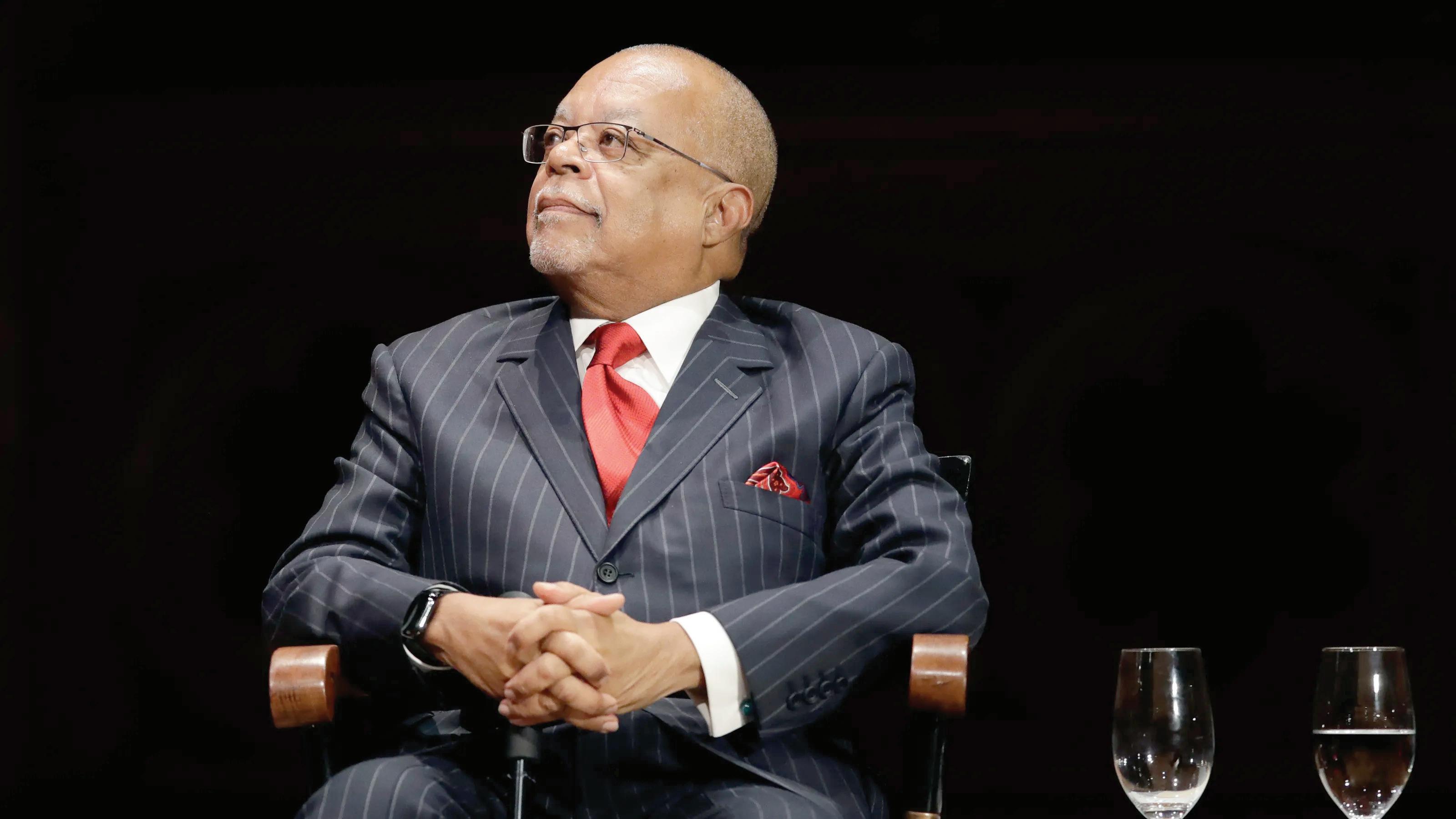
The four-part series debuting Tuesday on PBS (check local listings) and PBS online was produced, written and hosted by Gates, a steady chronicler of Black history and culture whose more than a dozen documentaries include 2021’s Emmy-nominated “The Black Church: This is Our Story, This is Our Song.” He’s also the host and producer of PBS’ “Finding Your Roots.”
“Making Black America” is infused with Gates’ selfdescribed optimism. But he considers it his “most political” series yet because it shows the “true complexity of the African American experience,” he said in an interview with The Associated Press.
“We need to have our self-image, our self-esteem
affirmed, because so many actors in our society are trying to tear down our self-esteem, trying to tear down our belief in ourselves,” he said.
Gates said the series is a rebuttal to what he calls the stereotype of a Black America consumed with white people and devoting all of its energy and imagination to fighting white supremacy.
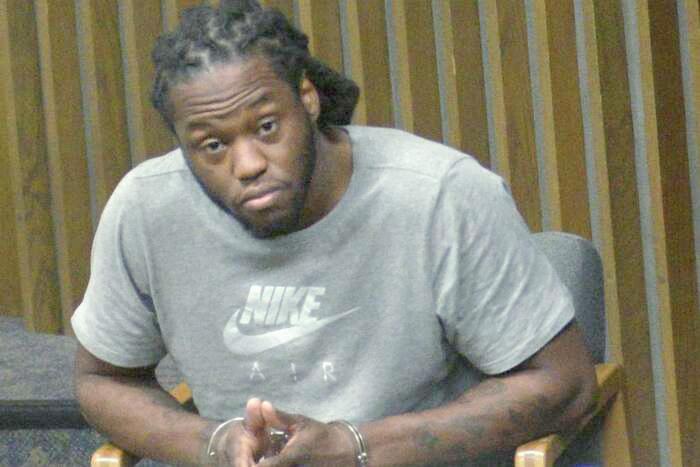
“What you do with most of your imagination is you fall in love, you raise a family, you have children, you build social networks,” said the Harvard University professor.
“This is a demonstration of Black agency, the way we created a world within a world.”
Gates compared the Black havens to those established by Jewish Americans and other ethnic groups when they were barred from employment, cultural institutions and other elements of U.S. society.
During a Q&A with TV critics, Gates delighted in pointing out that the “grapevine” in the series’ title predated the Motown hit song “I Heard it Through the Grapevine” by about two centuries: He said founding father John Adams wrote about the grapevine concept in 1775, and it was referred to by Booker T. Washington in 1901.
Washington founded what is now Tuskegee University.
The vivid word broadly describes “the formal and informal networks which, for centuries, have connected Black Americans to each other through the underground, not just as a way of spreading the news, but ways of building and sustaining” Black communities, said Gates.
Shayla Harris, who produced and directed the series
with Stacey L. Holman, said that the Black experience is often sorted into either “the struggle” or abundant creativity. But business drive is also a notable part, she said.
“The Negro Motorist Green-book”, a 1936-67 guidebook to businesses that would serve Black travelers, is generally discussed in the context of the restrictions that people of color faced under Jim Crow segregation.
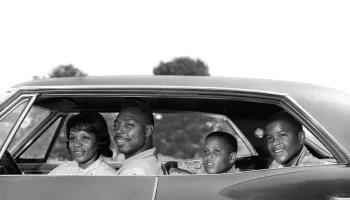
That ingenuity also was testament to the Black entrepreneurs who exemplified the saying that “Black people make a way out of no way,” Harris said. The guide was “a document of 7,000 Black businesses across the country, from restaurants to hotels to beachfronts and just any little stand that people could put together.” (The guide was central in the 2018 Oscar-winning interracial road trip movie “Green Book,” which won best picture and best supporting actor for Mahershala Ali.)
Other aspects of African American perseverance highlighted by the series and its creators:
– The barbershops and hair salons that serve as community centers. Gates said he still delights in going to the Nu Image Barbershop in Cambridge, Massachusetts, Harvard’s home town. The talk is about “what you’re anxious about, your kids, what’s in the news, of course. And you talk about LeBron (James) and Steph Curry and the Celtics. The full gamut of human emotions.”
– Excluded from professional, trade and even recreational associations, African Americans formed their own. In naming the groups, they used “national” in the titles as a “polite” way to signify the membership was Black,
Gates said. That included the National Dental Association and the National Brotherhood of Skiers. (In 2008, the American Medical Association formally apologized for decades of racial discrimination.)
– The robust number of sororities, fraternities and fraternal orders that contribute to Black social life and networking. One had roots in today’s Prince Hall Freemasonry. It began with a Massachusetts lodge initiated in 1775 by Masons from Ireland after Colonial whites rejected Hall and a handful of other Black men for membership.
– The innovative Black women who stood out in business. They included early 20th-century business mogul Madam C.J. Walker, inventor and philanthropist Annie Malone and Maggie L. Walker, who was among America’s first female bankers and who focused on the needs of the working class. To see these women succeed despite a society “that’s pushing against you and a society that’s predominately male ... was enlightening, encouraging and just empowering,” Holman said.
– The Ebony magazine-sponsored Ebony Fashion Fair runway shows that countered the industry’s overt discrimination by featuring Black models and designers for an audience that dressed for the occasion. The annual event, which was staged nationally and outside the U.S. for five decades, raised millions of dollars for charity.
Documentary Celebrates 40th Anniversary of Michael Jackson’s Thriller
By Stacy M. Brown NNPA Newswire Senior National CorrespondentWhen the Grammy Awards ostensibly snubbed Michael Jackson’s groundbreaking 1979 album, “Off The Wall,” the then-fledgling King of Pop vowed that voters at the Recording Academy would not ignore what he would offer next. On November 30, 1982, just over three years later, Jackson released “Thriller,” which earned him a record-breaking 8 Grammy Awards, including “Album of the Year.” To commemorate the 40-year anniversary of “Thriller,” the Jackson estate and Sony Music Entertainment said they’re celebrating the artistic vision that anchored the biggest selling album of all time with a new official documentary. Directed by Nelson George, the film promises to take fans back in time to the making of the album and release of revolutionary short films that redefined the music video format and captivated audiences globally. “Billie Jean” remains the most streamed Michael Jackson song and “Thriller” is the only music video that has been inducted onto the elite National Film Registry of the Library of Congress. According to a news release, the documentary features never-before-seen footage and candid interviews. The yet titled documentary chronicles the point in Jackson’s career that launched the singer into mega-stardom and created a pop culture phenomenon that is woven through the culture and continues to influence the worlds of music, television, dance, fashion and more to this day. “The release of Thriller redefined Michael Jackson, taking him from teen star to adult superstar, who
composed memorable songs, sang beautifully and reached the highest level of on-stage performance,” Nelson George said in the release. “The album, and the short films they inspired, created a new template for marrying music and image. It’s been a privilege to explore this extraordinary album and revisit its magic.” When a fledgling MTV, which programmed white rock artists almost exclusively, refused to play the video for “Billie Jean” Epic Records persisted. Once the wall came crashing down, MTV’s ratings soared, and a door was opened for a generation of African American artists. “He was MTV’s Jackie Robinson,” said cultural critic Touré, who appeared this week on the National Newspaper Publishers Association’s Let It Be Known to promote his new show, Masters of the Game.
The second studio album by Jackson as a solo artist on Epic Records, Thriller captured a record 12 Grammy nominations and a record-setting eight wins. Since its debut, Thriller has sold over 100 million albums worldwide, and was the first album to be certified triple diamond by the RIAA. “Michael opened and explored emotional depths and pushed the boundaries of sonic innovation on Thriller,” John Branca and John McClain, Jackson’s estate executors, proclaimed in the news release.
“In the process, he breached destructive barriers in the music industry and literally united the world through his music: there isn’t a place on this planet that hasn’t been exhilarated by the music of Michael Jackson.” “This documentary’s exploration of Michael’s process and impact is revelatory.”
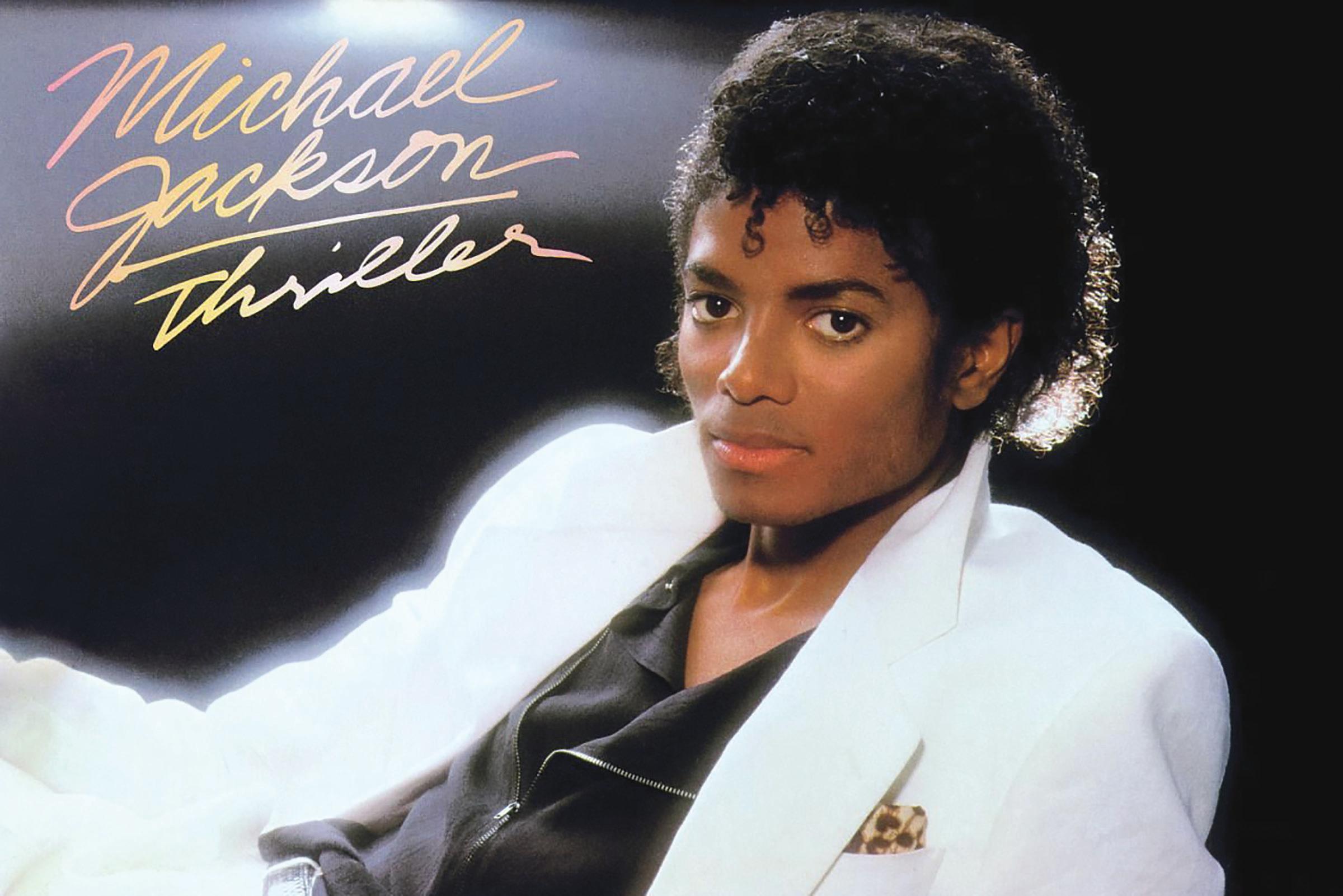
Black Californians Prioritize Health, While System Fails to Prioritize Black Californians
people reported putting “a great deal” or “quite a bit” of effort into getting screenings and preventative care, tracking health indicators like blood pressure and cholesterol, and working to maintain a healthy weight. Four out of five reported focusing “a great deal” or “quite a bit” on mental health.

One in three Black Californians and nearly half (47%) of Black women say they experienced inadequate treatment for pain by their health care provider. “We’ve heard story after story of Black women in particular, talking about not being believed, having their pain and agony inadequately treated,” Byerly said.
Nearly one in three Black Californians was found to be treated unfairly by a healthcare provider because of their race or ethnicity, and more than one in four Black Californians avoid care due to concerns that they will be treated unfairly or with disrespect. Unfair experiences are most common among Black Californians with mental health conditions, disabilities, identifying as LGBTQIA+, and women.

The study found that Black Californians have clear opinions on how to improve the health care system. Strong majorities (75%<) expressed that it is extremely important or very important to increase Black representation among health care leadership and in the healthcare workforce. The majority in each age group said that it was at least somewhat important to have a Black or African American Doctor. According to data released by the American Medical Association, 10% of medical school matriculants in 2021 self-identified as Black, or a combination of Black and Asian, Hispanic, or White.
“There needs to be additional support. Financial support. Upfront financial support, for those who want to be doctors. In nursing there’s also a need for financial support, but there’s also not a standard for advising people about the most efficient, most successful pathways to nursing careers… That’s a problem that can be corrected,” CHCF senior program officer Katherine Haynes told California Black Media. “There is another issue and this has to do with the environment in which physicians and nurses practice… just as patients experience racism,

providers experience racism, and they experience it from their peers, from their supervisors from patients…building practices of reporting those instances of racist treatment need to be made more robust so that a system is created in which providers of color can do their best work for patients. That means having zero tolerance for racist behavior in our healthcare institution.”

The survey indicated that Black Californians believe that there should be an expansion of community-based education to teach about how to access health care options and an increase of B lack community health care advocates. They believe that there should be accountability for providing equitable care using financial and accreditation incentives, and through additional training to providers.
More than 80% of the survey respondents said that they are very satisfied or somewhat satisfied with their main source of healthcare. Satisfaction rates were inversely related to age.
“When you look at elders 65 and older, and really 75+, they are the sickest, yet, they appeared most satisfied with their care…that satisfaction is in contrast to younger people who tend to go to urgent care or emergency rooms for care” said Haynes. “I suspect…that it comes from familiarity, having relationships and knowing how to use the system.”
The CHCF study showed that Black Californians go to great lengths to prioritize their health, but the health care system fails to prioritize them.
Haynes recommended one solution. “You can report it to your health plan. You can return it to the state licensing board. You can contact the Department of Managed Health Care, which oversees health plans and to the Office of the Patient Advocate. Those are those your rights,” said Haynes. “I will tell you that if you file a grievance versus a complaint, it poses legal liability and so those things that rise to that, or look like they might rise to that, are much more likely to get a response from a health care system.” You can read the whole report here.
Op-Ed
After 10 Years, It’s Time to Return Control of Inglewood Schools to the Community
 Joe W. Bowers Jr.
Joe W. Bowers Jr.
California Black Media
Last week, I wrote a commentary marking 10 years since the Inglewood Unified School District (IUSD) Board of Education lost control of Inglewood schools. I requested that it not be printed when I was informed that Dr. Erika Torres had announced she was stepping down from her position as IUSD County Administrator because she had a recurrence of breast cancer.
The commentary was very critical of Torres’ adminis tration so under the circumstances I decided to rewrite it removing the focus from her. I wish her well as she concen trates on her health and her family’s wellbeing
On Oct. 3, 2012, former State Superintendent of Pub lic Instruction (SPI) Tom Torlakson met with the IUSD School Board and told them that he was assuming all the legal rights, duties, and powers of the governing board. At the same time, he introduced Kent Taylor as his State Administrator that would be acting as both the governing board and superintendent.
Senate Bill (SB) 533 authored by Sen. Rod Wright (D-Inglewood) and signed by Gov. Jerry Brown on Sept. 14, 2012, approved an emergency appropriation of up to $55 million for IUSD to avoid fiscal insolvency.
The School Board asked Wright to write a bill request ing pre-approval for a state loan in case they needed it to cover a cash flow shortfall projected to occur in March 2013.
Wright said to the Assembly Appropriations Commit tee, “Mr. Chair, this bill does not require that they take the money. Inglewood will spend the next few months at tempting to work out their financial issues. We need this bill in place today to provide the authorization for up to $55 million. If they don’t need it, they don’t have to take it. If they need less than that, they can take less.”
Two days before Brown signed SB 533, the Board ap proved a resolution cutting teacher salaries and benefits up to 15 %, which would allow IUSD to avoid borrowing any state money.
But SB 533 gave Torlakson immediate authority over Inglewood schools as a condition of state receivership. That was not what the Board asked for or expected in Wright’s bill.
Torlakson wasted no time exercising that authority at the urging of the California Teachers Association acting on complaints from Inglewood Teacher Association President Peter Somberg and CTA Inglewood representative Jeff Good who were upset by the Board resolution and propo nents of the state taking over IUSD.
The IUSD School Board never asked the state for money authorized in SB 533.
The first thing Taylor did was rescind the Board reso
lution cutting teacher salaries. He borrowed $19 Million from the state without financial necessity and the loan he initiated put IUSD into receivership.
Torlakson appointed six administrators (two were in terim administrators) over six years and borrowed $29 Mil lion without financial justification from the state’s General Fund.
Dr. Don Brann was Torlakson’s least effective appoin tee. He failed to balance the budget, failed to maintain school facilities, and failed to secure millions of dollars in
fidence in the school district damaged by Brann. He re signed from IUSD when offered the opportunity to lead the San Francisco Unified School District.
Following Matthews, Torlakson appointed Dr. Thelma Meléndez. She had been Pomona Unified superintendent, assistant secretary for the U.S. Department of Education (Obama administration), Santa Ana Unified superinten dent, Mayor Garcetti’s chief education adviser and a senior administrator at Los Angeles Unified School District.
Meléndez engaged the IUSD community in develop
Schools Dr. Debra Duardo.
Duardo selected Deputy Superintendent Torres to lead LACOE staff assigned to work with Meléndez. To Duardo’s credit, she provided support staff that Torlakson didn’t when he was in charge.
After a few months of working with Duardo and Torres, Meléndez surprised the community when she an nounced plans to retire before her contract expired.
Torres was selected to be Inglewood’s seventh adminis trator under receivership after a number of candidates were interviewed.
Torres’ appointment was a tremendous drop off from the administrative experience Melendez brought to IUSD. At the time, it appeared that Duardo hadn’t learn from the mistakes Torlakson made with his early appointments.
Torres had never led a school district or even been a school principal or teacher.
Unlike Torlakson who visited Inglewood several times, Duardo ignored advice to introduce herself and Torres to the community. Their failure to connect has contributed to community mistrust of actions taken by county admin istration.
A few weeks ago, trying to pacify the IUSD commu nity’s frustration and anger with a number of their bad de cisions, Duardo and Torres conducted their first ever town hall meeting. Missing from their presentation was a list of accomplishments made during their four years of running IUSD schools.
It is clear that ten years of state intervention is not a guarantee that a school district in receivership will be bet ter managed. While Los Angeles County school districts operating under local control like Los Angeles Unified, Culver City Unified, and Compton Unified have advanced academically and improved their facilities, similar progress at IUSD has been stunted under state and county admin istrative malpractice.
Of seven administrators appointed under receiver ship only two had resumes showing the level of experience needed to be effective IUSD administrators. Duardo’s ap pointee was not one of them.
The Inglewood Board of Education has served patient ly in an advisory role for 10 years. That’s longer than any school district with a state loan.
state and federal grants that Inglewood qualified for before it went into receivership.
Community advocates outraged over Brann’s ineffec tiveness convinced the Legislature to spend about $300,000 to audit IUSD. The audit findings persuaded Torlakson to appoint experienced and accomplished administrators.
He terminated Brann’s employment and replaced him with Dr. Vincent Matthews who had been superintendent at Oakland Unified and San Jose Unified School District. Matthews balanced IUSD’s budget and repaired con
ing a strategic plan for Inglewood students. She invited the community to meet at the “Fabulous” Inglewood Forum to express their thoughts and ideas so they would be included in the plan. She used bond money that was not being uti lized to repair and upgrade the schools.

Assembly Bill (AB) 1840 enacted in 2018 to provide financial relief to IUSD and Oakland Unified School Dis trict also transferred responsibility for managing IUSD from the SPI to the Los Angeles County Office of Edu cation (LACOE) and L.A. County Superintendent of
As the search for Torres’ replacement begins, Duardo should assign the IUSD Board responsibility for recom mending the next County Administrator from the list of vetted candidates. Otherwise, the Board when it regains local control will likely select a new Superintendent.
My next commentary will provide a guideline on what the IUSD community should do to regain local control.
Democrats It’s Time to Meet the Moment On Latest LA City Hall Scandal,
By Jasmyne A. CannickLos Angeles has seen its fair share of political scandals over the decades, but the leaked audio of Los Angeles City Council President Nury Martinez, Councilmembers Gil Cedillo, Kevin de León, and Los Angeles County Feder ation of Labor President Ron Herrera making disparaging and racist remarks about Black people, their colleagues, and conspiring to commit voter suppression takes the cake.
In one single instance, the worst fears of Blacks in Los Angeles were confirmed in graphic detail--the top Demo cratic political and labor leaders of the city are anti-Black and are actively conspiring to dismantle what is left of the Black community in Los Angeles.
Famed author and poet Maya Angelou once said, “When someone shows you who they are believe them the first time.”
From referring to a white councilmember’s Black son as an “accessory” and describing him as a monkey in Span ish to wanting to physically beat that same little boy, col luding to replace one Black councilmember with another who can be depended on to vote in favor of Latinos, con spiring to commit Black voter suppression, even seemingly writing off Los Angeles County District Attorney George Gascón because “He’s with the Blacks”--no one should ever be confused about where Black people stand with Marti nez, Cedillo, de Leon, and Herrera.
Now that their plotting and planning and blatant rac ism have been exposed, usher in the carefully crafted public apologies.
Miss me.
At the risk of never working at city hall or in politics again, I am going to speak the truth about this situation.
There are some instances where apologies just won’t cut it, and this is one of them.
The only acceptable resolution to this scandal is for the immediate resignation from public office of all four people involved. Period.
This is not a situation where thoughts-and-prayer-like statements mean a damn thing.
The only statement that needs to be crafted is a resig nation statement, and as a seasoned political strategist, I’ll write it for them for free.
Let’s be clear, had the leaked audio been of a group of Black leaders or Republicans saying racist and derogatory comments towards any other race or group of people and it would have been a “Do not pass Go and do not collect $200” type of situation that would have resulted in the immediate calls for resignations of all involved.
This situation deserves the same treatment, and any thing less says that it’s open season on Blacks and that there are no real long lasting consequences.
The deafening silence from alleged allies of the Black
community on this situation, including the Democratic Party, is just as bad as the strongly worded statements that say everything except for the Martinez and Co. to resign.
This is a s--t or get off the pot moment. There is no sitting on fence or tap dancing around the elephant in the room.
Either you support racists or you don’t, and from where I am sitting, the Los Angeles County and California Democratic Parties, along with dozens and dozens of polit ical leaders, seem to be siding with the racists, which makes them all hypocrites.
This is not a situation where folks get off the hook by apologizing, followed by meeting with leaders in the Black community, and we’re back to holding hands and singing kumbayah.
Any so-called Black leader that isn’t calling for the resignation of these four people is aiding and abetting in the oppression and suppression of their own people, most likely for personal gain.
Fact. All four of the people involved in the leaked audio get paid from money that comes from all Angele nos--not just Latinos. Nury Martinez offering to resign as council president leaves her paycheck and position as a councilmember in place. And in the case of top labor lead er Ron Herrera, he actually conspired to use the dues from the paychecks of hardworking Black folks against them to dilute their power in the 10th council district.
It is because of years of behind-the-scenes anti-Black politicking by people who share the same views as Marti nez, Cedillo, de Leon, and Herrera that Black people have been pushed out of the city to the point that there is no real Black political power in the city of Los Angeles. Because of the high cost of living and years of the very same tactics discussed in that audio, Black people make up less than 9 percent of the city’s population. Any power that we think we have in Los Angeles almost always requires the buy-in and support of allies. We have a 15-member city council with three Black members, of which one’s credibility has been called into question given the comments heard in the audio about why she was appointed to the position.
For those of us who love this city and fight every day just to be able to afford to live here, this hurts deep down.
The release of the audio is an in-your-face reminder that many of the powers that be don’t care about us or want us here and are actively working against us--sadly, in some ways, with the help of other Blacks.
The audio also validates why the only zip code in the city that has seen an increase in its Black population is the one that encompasses Skid Row--an area of Los Angeles that Kevin de Leon represents. We know how he feels about Black people. It explains why Black people make up most of the homeless and cannot access city services in the ways
others can. It explains why so many of the councilmembers don’t have any Black people on their staffs. Why Black con sultants aren’t hired by labor unions in the way that other races are? Why there is a lack of Black leadership at the executive level in many of the labor unions in Los Angeles. The audio explains a lot.
When the top leadership of the city council calls a Black boy a monkey, says she wants to beat him, and ac cuses a colleague of being with “the Blacks,” what more do you need to know? I told you what Maya Angelou said.
Given the revelations exposed, every vote that was ever cast by Martinez, Cedillo, and de Leon that had anything to do with Black people needs to be re-examined. De partment heads, starting with the chief of police, need to be interviewed on the record to see if members of the city council gave them directives to target, ignore, not hire, ar
rest, deny, not rent to, not contract with, not buy from Black people.
Pandora’s Box has been opened.
Add to all of that, the federal government needs to step in and investigate the city’s redistricting process, now.
If known racists are allowed to stay on the city council after being exposed, then we, Black people, deserve every thing we get moving forward.
Democrats love to talk about meeting the moment. What are they waiting for?
A political strategist, Jasmyne Cannick is a former Spe cial Assistant to previous Los Angeles City Council Presi dent Herb Wesson, a delegate in the Los Angeles County Democratic Party, and a proud member of The Blacks.
In My White Tee:
South Central Style, New Exhibit at William Grant Still Arts Center

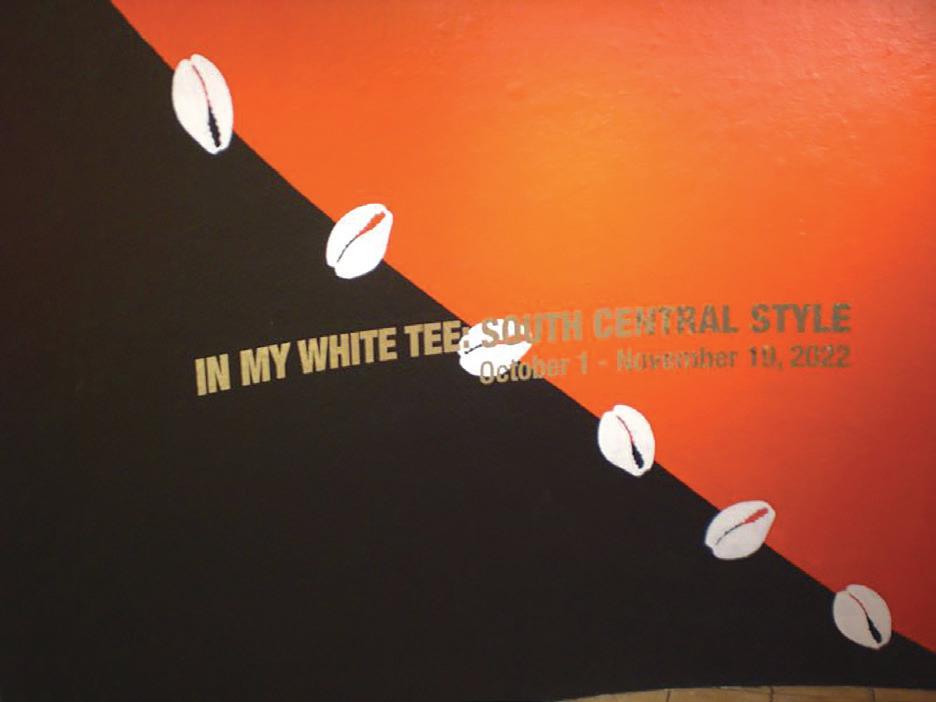 By Ricky Richardson Contributing Writer
By Ricky Richardson Contributing Writer
(Los Angeles, Ca.) – I’ m excited to share with you that the William Grant Still Arts Center has reopened after a hiatus due to the pandemic.
Saturday, October 1, 2022, The William Grant Still Arts Center held an opening reception to present an ex hibition celebrating the distinctive styles that have grown out of the cultures, layers, and experiences of the neighbor hoods of South Central, Pico-Union, South East, Watts, Inglewood, Compton and Long Beach.
The opening reception was well attended by art pa trons and members of the community. The exhibition brings together current and past styles as well as some his torical elements contextualizing fads. The exhibit is on dis play, October 1-November 19, 2022.
The exhibition includes installations, clothing, pho tography and video collected from the community through invitation and open call.
Saturday, October 8, William Grant Still Arts Center
hosted New Orleans based Big Chief Shaka Zulu. Based in New Orleans, Big Chief Shaka Zulu is one of the lead Black Masking Indians of New Orleans. He has been named the 2022 NEA folk heritage artist awardee. Big Chief Shaka Zulu was featured in a Master Class where he gave a Uni versity level discussion on his drumming style, historical attire and fabrication. This fascinating lecture presented the audience with a history of Black Masking Indians, historical facts about New Orleans and history in general.
Big Chief Shaka Zulu concluded his lecture with a popular song accompanied by Marcus L. Miller on drum, Michael Whitehorse Avila on flute and the crowd on tambourines.
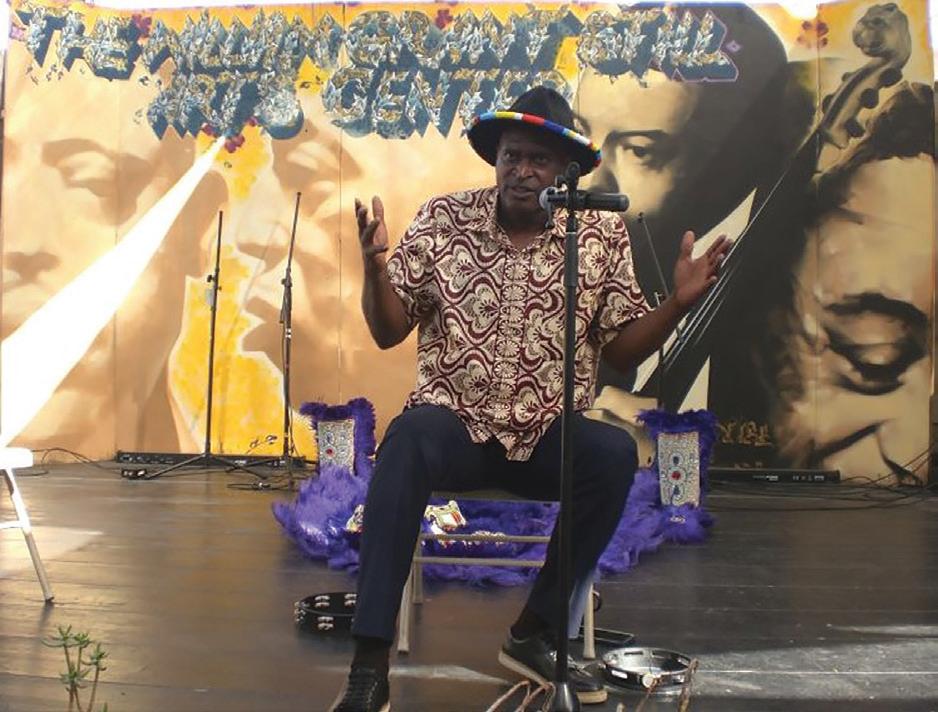
A previous engagement prevented me from attending the concert in the evening with a full band as well with Big Chief Shaka Zulu in full costume.
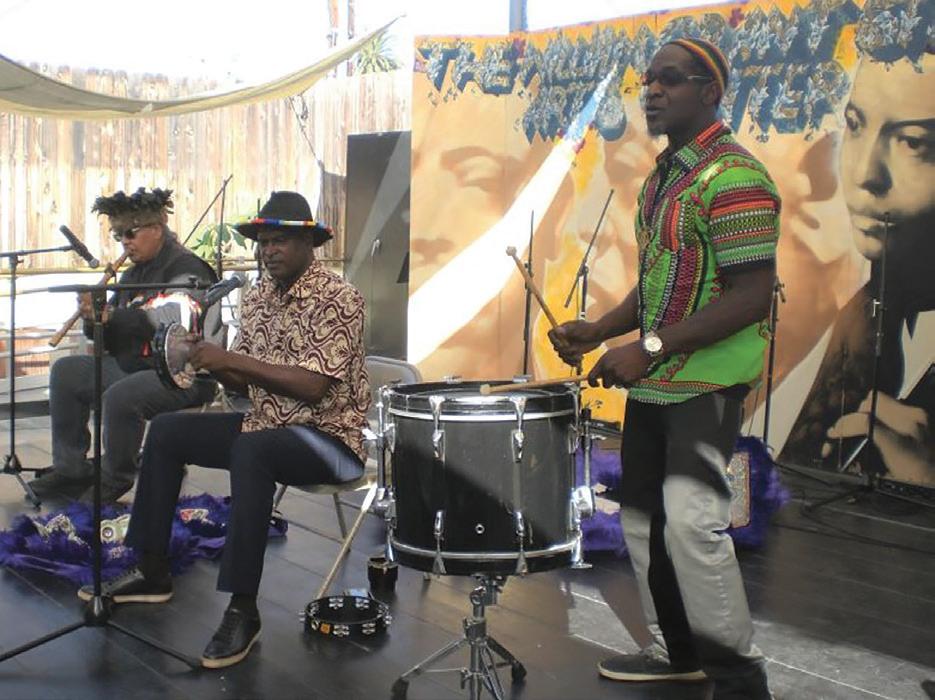
William Grant Still Arts Center, 2520 S. West View Street, Los Angeles, CA. 90016. Hours are Tuesday-Satur day, 12-5pm. Visit https://wgsac.wordpress.com for more information.
Council Members Martinez and de León Attract the Ire of The Black Community
A leaked audio recording of a meeting between Los Angeles City Council President Nury Martinez, Council Members Kevin de León and Gil Cedillo and L.A. County Federation of Labor President Ron Herrera revealed that a number of racially insensitive comments were made.

The revelations have forced the four Latino leaders to make public apologies as calls from the Black community for them to resign their positions increases.
Councilman Mike Bonin’s son was referred to by Martinez as “ese changuito,” which means little monkey, and “su negrito,” which is a derogatory term for a Black
person. Bonin is White and his son is Black.
Bonin is calling for Martinez to be removed as president of the city council and for her and de León to resign.
“We are appalled, angry, and absolutely disgusted that Nury Martinez attacked our son with horrific racist slurs, and talked about her desire to physically harm him,” Bonin wrote in a statement with his partner Sean Arian. “It’s vile, abhorrent, and utterly disgraceful. The City Council needs to remove her as Council President immediately, and she needs to resign from office. Any parent reading her comments will know she is unfit for public office.”
The racially insensitive comments and
uncomplimentary remarks about their city council colleagues were made during an October 2021 meeting convened to discuss the redrawing of council district boundaries to reflect the 2020 U.S. Census.
Martinez’s comment about Bonin’s son were directed at his behavior during a Dr. Martin Luther King Day Parade in 2017. She claimed his son nearly caused a float she was on during the parade to tip over and said that someone need to “parent that kid.”
“They’re raising him like a little white kid,” Martinez said. “I was like, ‘this kid needs a beatdown. Let me take him around the corner and then I’ll bring him back.’”
All of the participants in the meeting have issued
public apologies.
“In a moment of intense frustration and anger, I let the situation get the best of me and I hold myself accountable for these comments. For that I am sorry,” Martinez stated.
“The context of this conversation was concern over the redistricting process and concern about the potential negative impact it might have on communities of color,” the statement said. “My work speaks for itself. I’ve worked hard to lead this city through its most difficult time.” Martinez also said.
De León who called Bonin the council’s “fourth Black member”, was also caught saying “Mike Bonin won’t (expletive) ever say peep about Latinos. He’ll never say a (expletive) word about us.”
“There were comments made in the context of this meeting that are wholly inappropriate; and I regret appearing to condone and even contribute to certain insensitive comments made about a colleague and his family in private. I’ve reached out to that colleague personally,” de León stated in his apology.
Cedillo said, “While I did not engage in the conversation in question, I was present at times during this meeting last year.... Clearly, I should have intervened.”
Herrera in his statement said, “I didn’t step up to stop them and I will have to bear the burden of that cross moving forward.”
The three current Black city council members, Curren Price, Heather Hutt, and Marquees Harris Dawson, issued a joint statement about the recording that said, “This is a dark day for LA politics for African Americans, the LGBTQ+community, Indigenous people and Angelenos who have put their faith and trust in local government...... The actions of our colleagues should not be tolerated and a vapid tongue has no place in City Hall. Not today, not tomorrow, not ever”
Karen Bass who’s been endorsed by Martinez for LA mayor responded to the recording by stating “Let me be clear about what was on those tapes: appalling, anti-Black racism.... All those in the room must be held accountable, and I’ve spent the day speaking with Black and Latino leaders about how to ensure this does not divide our city.”
Bass’ opponent, Rick Caruso’s statement on the racially charged comments said, “Everyone involved in this should be held accountable.” Caruso has been endorsed by Cedillo.
Jasmyne A. Cannick, who has worked as a political spokesperson and is a City Hall veteran tweeted, “I’m watching how long it’s taking all of our allies to disavow their comments and call for their resignation. I told y’all Los Angeles was an anti-Black city.”
The California-Hawaii (CA/HI) State Conference of the NAACP and the Los Angeles Branch of the NAACP are calling for the immediate resignation of Martinez, Cedillo, de León, and Herrera.
“This kind of overt racism has no place in political discourse,” said Rick L. Callender, President of the CA/HI State Conference of the NAACP.
“We will not sit idly by and allow our elected representatives to engage in these kinds of disgusting and racist behaviors,” said Latricia Mitchell, President of the Los Angeles Branch of the NAACP.
Both the NAACP State Conference and the LA Branch are asking for the City of Los Angeles to investigate, how far the racial animus has impacted hiring and other decisions of the City Council.
Story Update: Nury Martinez, resigned as Los Angeles City Council president
Her resignation is effective immediately. However, she will remain a member of the council. She is up for reelection in 2024.
Martinez represents the city’s 6th district, which includes Hollywood, Panorama City and other parts of the San Fernando Valley.
Martinez said in her statement announcing her resignation as president that, “Going forward, reconciliation will be my priority. I have already reached out to many of my Black colleagues and other Black leaders to express my regret in order for us to heal. I ask for forgiveness from my colleagues and from the residents of this city that I love so much. In the end, it is not my apologies that matter most; it will be the actions I take from this day forward. I hope that you will give me the opportunity to make amends.”
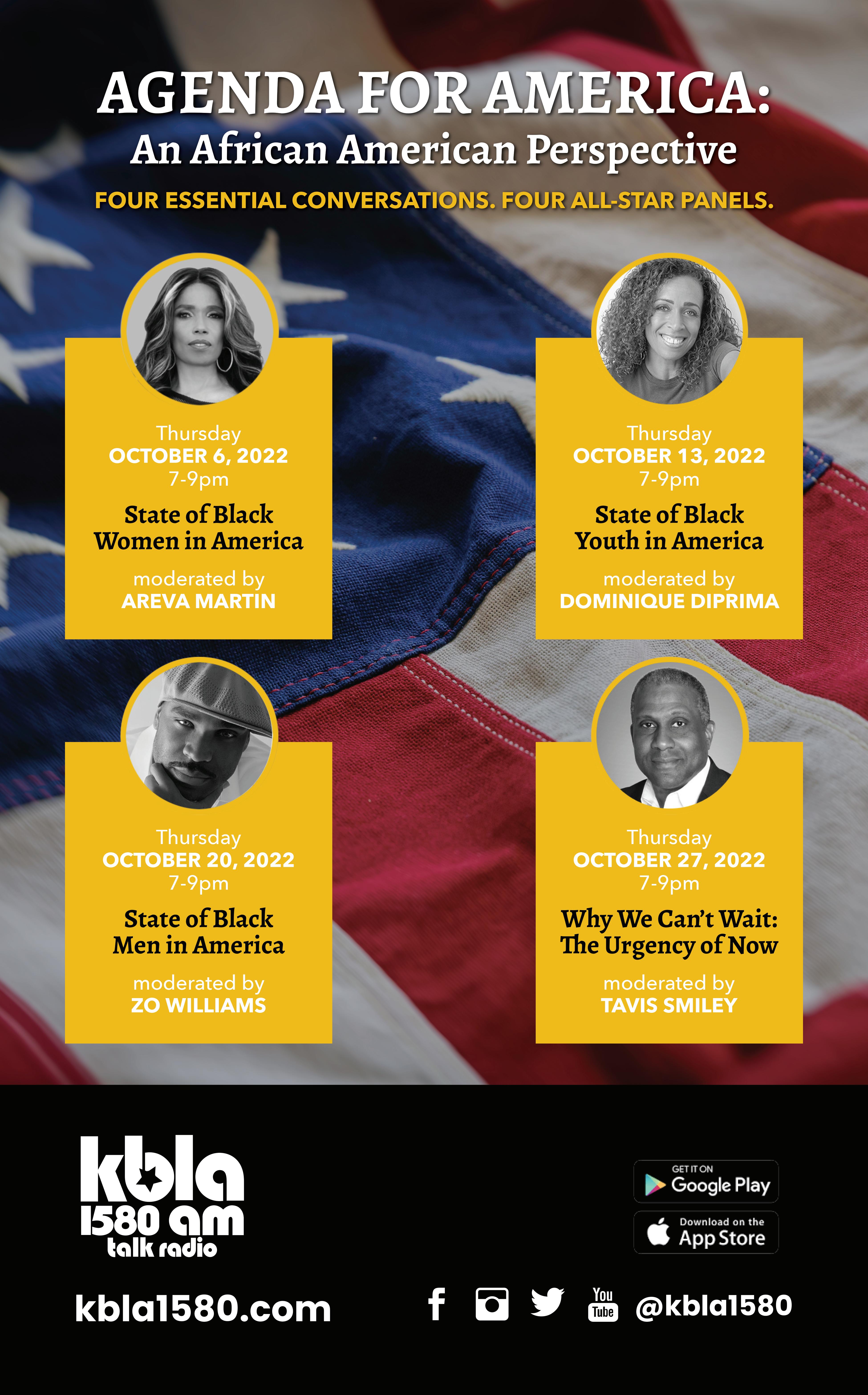
Sports
Dodgers Take Early NLDS Lead
The Dodgers can take a 2-0 series lead over San Diego with a win Wednesday. They’ll send three-time Cy Young Award winner Clayton Kershaw to the mound against Padres ace Yu Darvish.
If Kershaw and the Dodgers win a second World Se ries in three years, it may be without eight-time All-Star Craig Kimbrel in the bullpen. And that’s by choice.

Kimbrel was left off Los Angeles’ NLDS roster, a deci sion manager Dave Roberts made two weeks after demot ing Kimbrel out of the closer’s role.
Kimbrel was 6-7 with 22 saves and was booed at times in his first season in Los Angeles as the replacement for Kenley Jansen. Kimbrel leads active pitchers with 394 ca reer saves and has never blown a postseason chance in 23 appearances, although he has a subpar 4.13 ERA in those games.Chris Martin pitched the ninth inning in LA’s 5-3 win Tuesday night, converting his first postseason save in 15 career appearances.
Bruin’s Thompson-Robinson and Trojan’s Tuipulotu Earn PAC12 Honors
By Earl Heath Contributing Sports Writer Dorian Thompson-Robinson and Tuli Tu ipulotu, won this weeks PAC 12 A repeat winner, Thompson-Robinson earned the fourth Player of the Week honor of career and became the first UCLA player to win in back-to-back weeks since running back Johnathan Franklin during the first two weeks of the 2012 season. The Senior from Las Vegas ac counted for five touchdowns during a win against Utah, completing 18 of 23 passing attempts for four scores and 299 yards. He led UCLA to touchdowns on its first four drives of the second half to put the Bruins up 42-25 after holding just a four-point half time advantage.
Thompson-Robinson’s fourth touchdown toss of the game was the 76th of his career, lifting him past Brett Hundley (2011-14) and into the most in UCLA history. It marked the fourth career game in which Thompson-Robinson has thrown at least four touchdown passes.

Tuli Tuipulotu,a junior who plays DEFENSE and DEFENSIVE LINE was a force on the Trojan defensive line in USC’s 30-14 victory over Washing ton State, recording five tackles with four for loss for 18 yards and three sacks for 17 yards. Tuipulotu had two sacks in three plays during the first quarter. He fell one short of tying the school record of 4four sacks in a game. It was the fifth consecutive game in which Tuipulotu had at least one tackle for loss, and he now has 12.5 tackles for loss this season. HE leads the nation in sacks with 1.17 per game and is tied for No. 1 in the nation in tackles for loss with 2.1 per game.
It is the second time this season Tuipulotu has won the Defensive Lineman award (Week 2) and first time winning Defensive Player.
Abanikanda and Mitchell Win Walter Camp Awards
By Earl Heath Contributing Sports Writer Israel Abanikanda of Pittsburg and Quinyon Mitchell of Toledo were selected Walter Camp offensive and defen sive Players of the Week by the Walter Camp Foundation.
Abanikanda set a Pittsburgh school single-game record with 320 rushing yards (on 36 attempts) and tied a school and Atlantic Coast Conference record with six touchdowns as the Panthers defeated Virginia Tech, 45-29. The Brook lyn native also broke former Walter Camp Player of Year Tony Dorsett’s previous school record of 303 yards (set on Nov. 15, 1975 vs. Notre Dame). Abanikanda scored on runs of 38, 17, 29, 5, 10 and 80 yards as Pittsburgh im proved to 4-2, 1-1 in the ACC.
The junior running back is the eighth Pittsburgh player to earn Walter Camp National Player of Week hon ors since 2004 and the first since former Panther running back Darrin Hall (Nov. 5, 2018).
On the defensive side is Mitchell recorded three tack les and made four interceptions, including two he returned for touchdowns, as Toledo defeated Northern Illinois, 52-32. Mitchell had interception returns of 20 and 25 yards for scores as the Rockets improved to 4-2, 2-0 in the Mid-American Conference.
The sophomore corner from Williston Fla, is the sec ond Toledo player to earn Walter Camp National Player of Week honors since 2004, and the first since former Rocket defensive back DeJuan Rogers (Sept. 13, 2015).
Rams Deal with Injuries and Adversity
By Earl Heath Contributing Sports WriterIt was early when on’ third offensive play, Dallas’ Dorance Armstrong bolted through the Los Angeles offensive line and hit Matthew Stafford. DeMarcus Lawrence scooped up the quarterback’s fumble and rumbled into the end zone.
That was a sign of things to come as the injury rid dled Rams got off to a sluggish start with a patchy O-line that has seen the team only score one touchdown in the last nine quarters. They only mustarded up three field goals against San Francisco last week.
Lawrence returned a fumble 19 yards for a touchdown on the Rams’ opening drive, and Cooper Rush remained unbeaten as the Cowboys’ fill-in starter despite passing for just 102 yards in a 22-10 victory over Los Angeles on Sun day in front of 74,154 at So-Fi stadium.

Tony Pollard had a 57-yard TD run for the Cowboys, who are off to a 4-1 start for the second consecutive sea son after racking up four consecutive wins without starting QB Dak Prescott, who seems close to a return from thumb surgery. “There is some adversity that we’re facing right now,’’ McVay said. ‘’You find out a lot about people when you do
go through that. It’s not good enough right now. I’ll never pretend that it is.’’
Cooper Kupp had a 75-yard touchdown reception for the Rams (2-3), who fell below .500 for only the second time in coach Sean McVay’s six seasons while getting shutout in the second half.

Stafford finished the day completing 28 of 42 with one INT for 308 yards. The Rams only rushed for 38 yards.
Also in the first Armstrong forced the fumble returned by Lawrence and later blocked a punt in the first quarter for Dallas, which got 86 yards rushing from Pollard and 78 more from Ezekiel Elliott. With Rush going 10 for 16, the running game and the Cowboys’ solid defense took charge.
“We have to get to 3-3 first,” said McVay. Then we’ve got to be able to do a lot of things over the bye to get this thing cleaned up.
It was a rematch of the first regular-season game in the history of So-Fi Stadium, the multibillion-dollar football palace built by Rams owner Stan Kroenke and championed by Cowboys owner Jerry Jones. Los Angeles beat Dallas 20-17 without fans in attendance to open the 2020 season.
Next up Rams will host Carolina Sunday at So-Fi Sta dium.
Grand Opening of Metro K Line
By Ricky Richardson Contributing Writer(Los Angeles, Ca.) – Friday, October 7th, Metro opened its newest light rail line to the public, the 8.5 mile, $2 billion K Line, also known as the Crenshaw/LAX Line. Metro offered free rides all weekend over the entire system in celebration of the opening of the K Line. This was very timely, welcome news, for people attending the USC home game at the Los Angeles Coliseum, and Grand Park 10th Anniversary Celebration on Saturday, as well as Ciclavia and Los Angeles RAMS home game at SoFi Stadium on Sunday.
Mayor Eric Garcetti and numerous leaders and com munity stakeholders were on site to celebrate the opening of the Metro K Line- previously known as the Crenshaw/ LAX Project.
“Today, we’re fulfilling a dream that started with May or Tom Bradley and was carried on for decades by countless community leaders and elected officials: world-class pub lic transportation in South Los Angeles,” said Mayor Eric Garcetti. “Angelenos generations from now will recognize the opening of this line as a new chapter in Los Angeles’ transportation history- as a moment when we opened doors of opportunity to communities that have been ig nored for too long, as we put our commitment to making Los Angeles a more inclusive, accessible, and sustainable city on the fast track.”
Metro CEO Stephanie Wiggins, who helped get the K Line across the (almost) finish(ed) line stated, “after de cades of going without rail transit, I’m proud to lead Metro as it delivers the K Line to Crenshaw, Inglewood, and all of the other South Los Angeles communities.” “We are eter nally grateful to area’s residents and businesses for hosting us in the community during a long and technically com plex construction period. I know the K Line will be used and well loved by these communities and the rest of Los Angeles county for decades to come.”
“The K Line will bring a new era of equitable trans portation investment that connects the Crenshaw corridor and Inglewood residents to convenient, fast reliable and low-cost rail transit,” said Metro Board First Vice Chair Jacquelyn Dupont-Walker. “What’s more, it will provide a new gateway to jobs, education, and health care for our communities that need it most.”
The seven stations currently open are Expo/Crenshaw, Martin Luther King Jr., Leimert Park, Hyde Park, Fairview Heights, Downtown Inglewood and Westchester/Veterans.
Two additional stations are anticipated to open in 2024, when the Airport Metro Connector is completed.
This was a cause for a celebration. The opening cer emonies was held in Leimert Park Village. This area is internationally known as the cultural hub of the African American community.

The K Line! Fest got underway after the Ribbon Cut ting ceremony featuring Los Angeles Mayor Eric Garcetti, Grammy Award Winner Jody Watley, elected officials and community stakeholders.
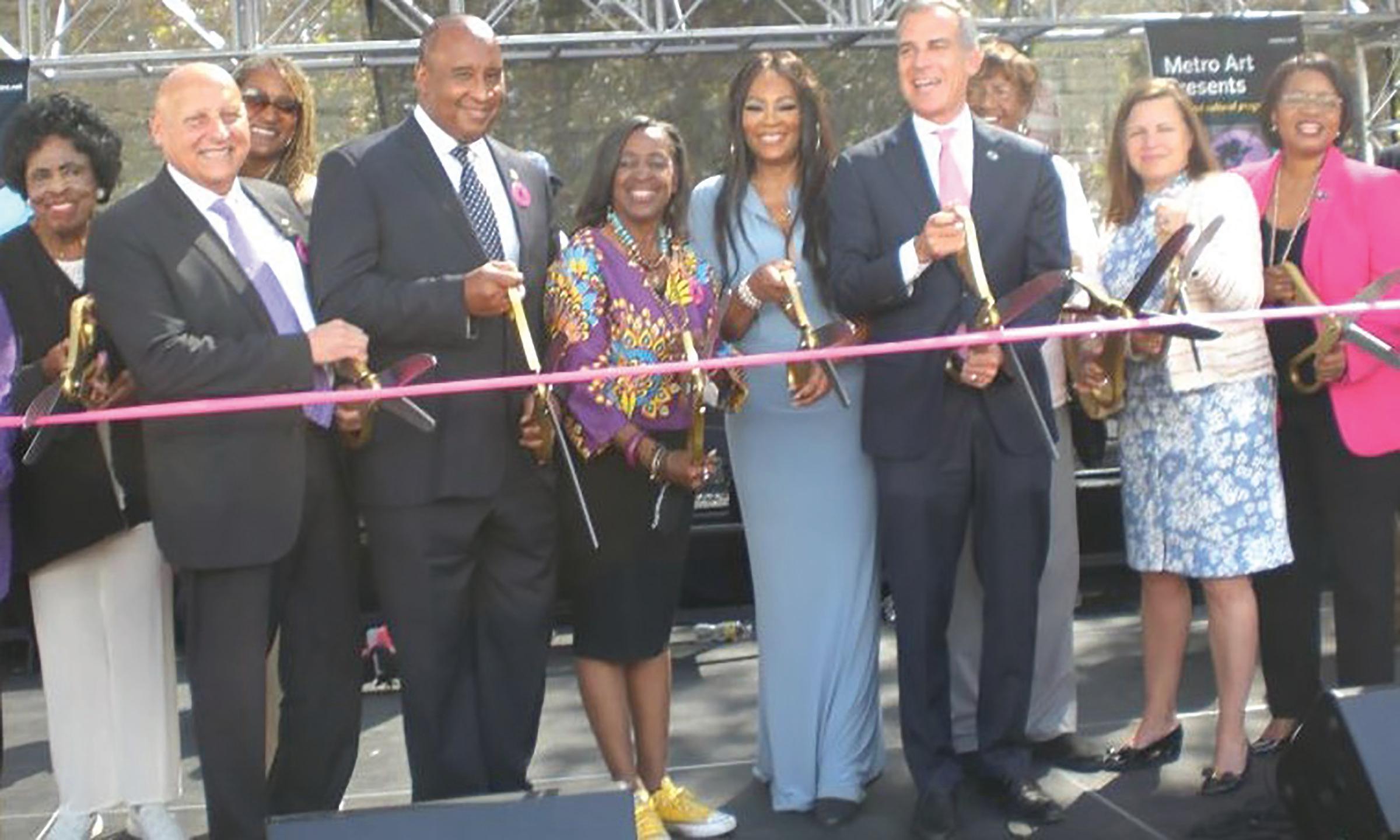
Medusa and Ben Caldwell (KAOS), served as Emcees for the K Line! Fest. Attendees enjoyed live performances by notable local artists, food from some of the best eateries along the K Line, giveaways, free rides on the K Line and throughout the Metro system and more.
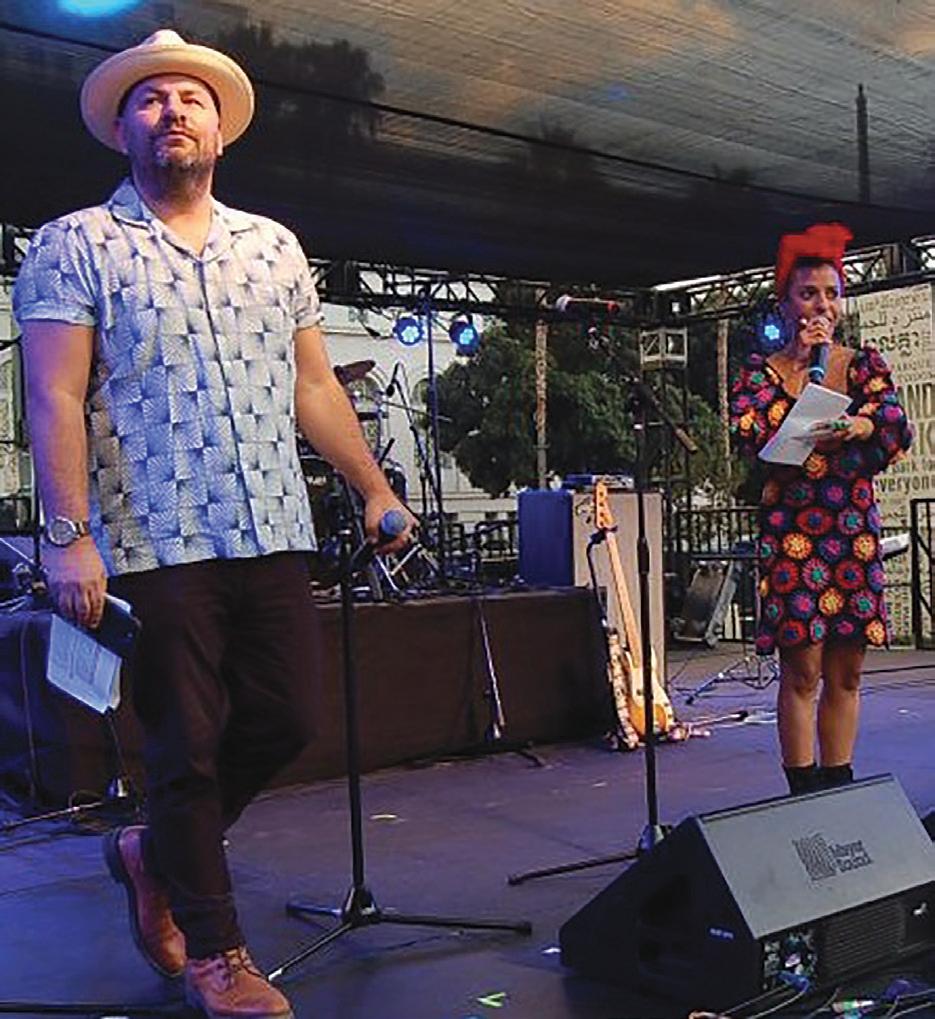
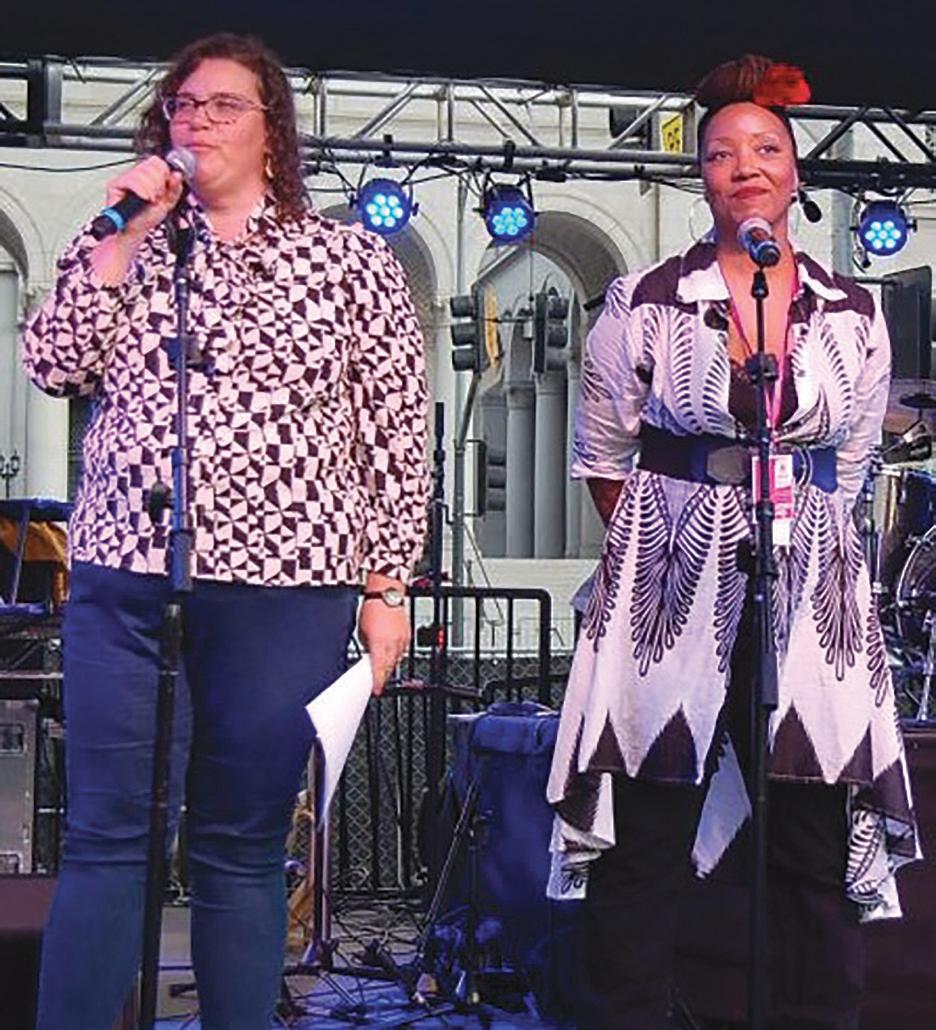
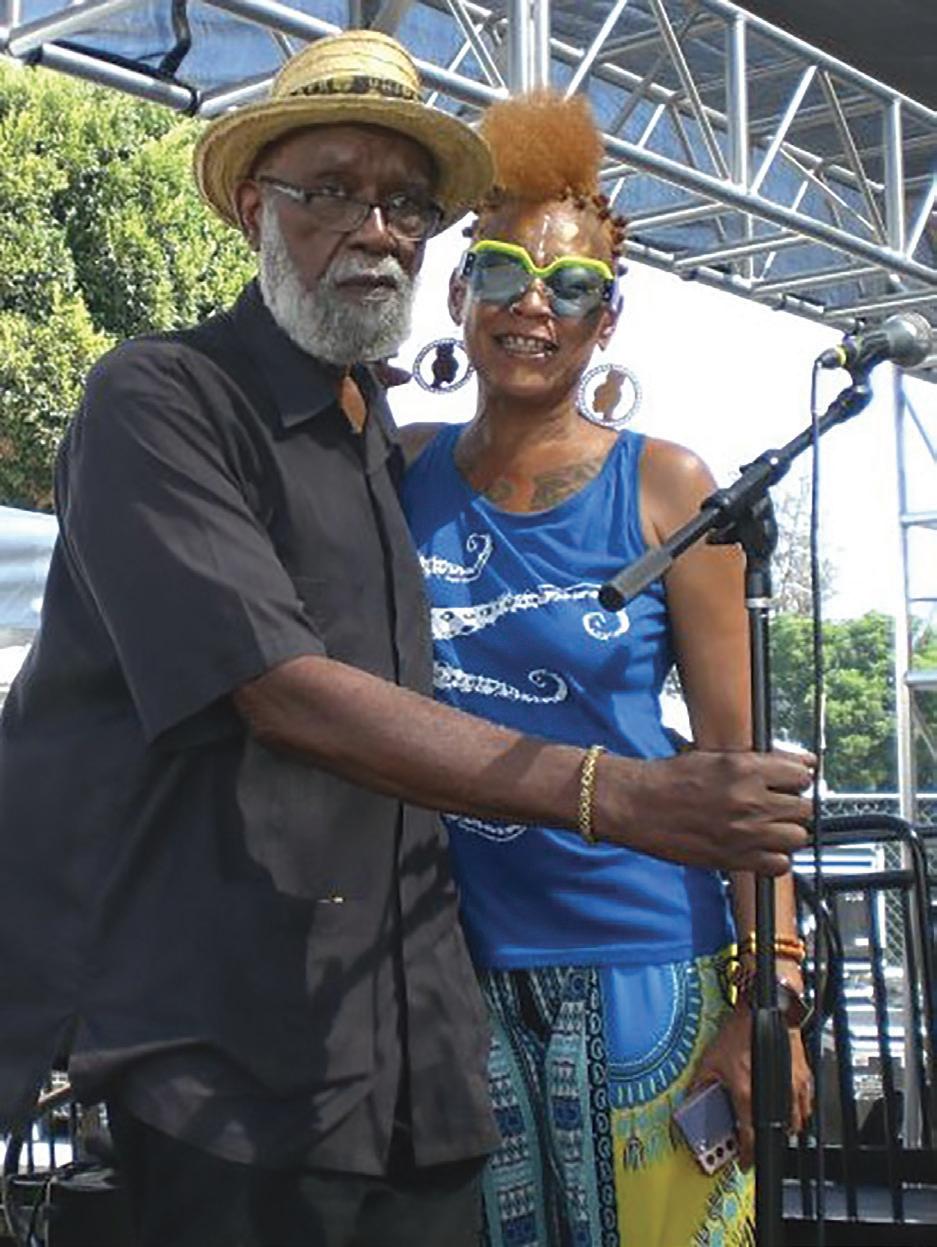
The Friday Stage program presented by Metro Art.Jerry Flores and DJ Adé was on deck of the ones and twos, spinning an eclectic soundtrack of infectious beats. S.H.I.N.E Muwasi uplifted the spirits of the ancestors
and honored the ancestors during Libations. The group proceeded to entertain the crowd with West African drum ming, dancing and singing praises.

The previous act was a perfect segue for the next group. Fode Sissiko on kora, opened with a popular song from Senegal. Kouman Kele West Africa Dance Company continued our journey with a vibrant, visual display of pul sating, and thunderous rhythms and dancing. Attendees couldn’t resist the urge to get up to move and groove to the contagious, infectious rhythms.
Lula Washington Dance theatre perform a beautiful display of eclectic and electrifying dance performances.
K Line! Fest honored the rich jazz history, legacy of Leimert Park Village during the next three performances. The Pan African Arktet featuring Mekala Session on drums, Michael Session on sax, Maia on vibes, flute and vocals, Jermaine Paul on bass, Ricky Washington on sax and Fundi Legohn on French horn. They performed “Mothership,” “Dred Scott 1857,” “and closed their set with “Man from Tanganyika” by McCoy Tyner.
Dwight Trible continued in a straight-ahead jazz mode, performing “All Blue,” by Mongo Santamaria, “Lit tle Sunflower” by Freddie Hubbard and concluded his set with “You’ve Got to Have Freedom,” by the late great Pha raoh Sanders.
Fernando Pullum Community Arts Jazz Band sounds like seasoned professionals. They performed an energetic set of tunes. The crowd and I were really impressed with their arrangements of “R U Chicken,” “Naima,” “Human Nature,” and “Before I Let Go” featuring vocalist Katrina.
Bananas Network consisted of original tracks by Al pha tha Alien, All City Jimmy, & Rhys Langston. DJ Lin afornia played some original beats.
Kamau Da√°ood & A Band of Griots closed out this fabulous Metro K! Fest with a wonderful set of spoken word and jazz. The band featured Shabaka on flute, Carlos Nino on percussions, Greg Paul on drums and Jeffrey Lit tleton on bass.
Grand Park 10th Anniversary Concert
Stone of Sly and Family Stone legacy, fired up the festiv ities with a wonderful soundtrack of soul, R&B, funk and global beats to the delight of the crowd.

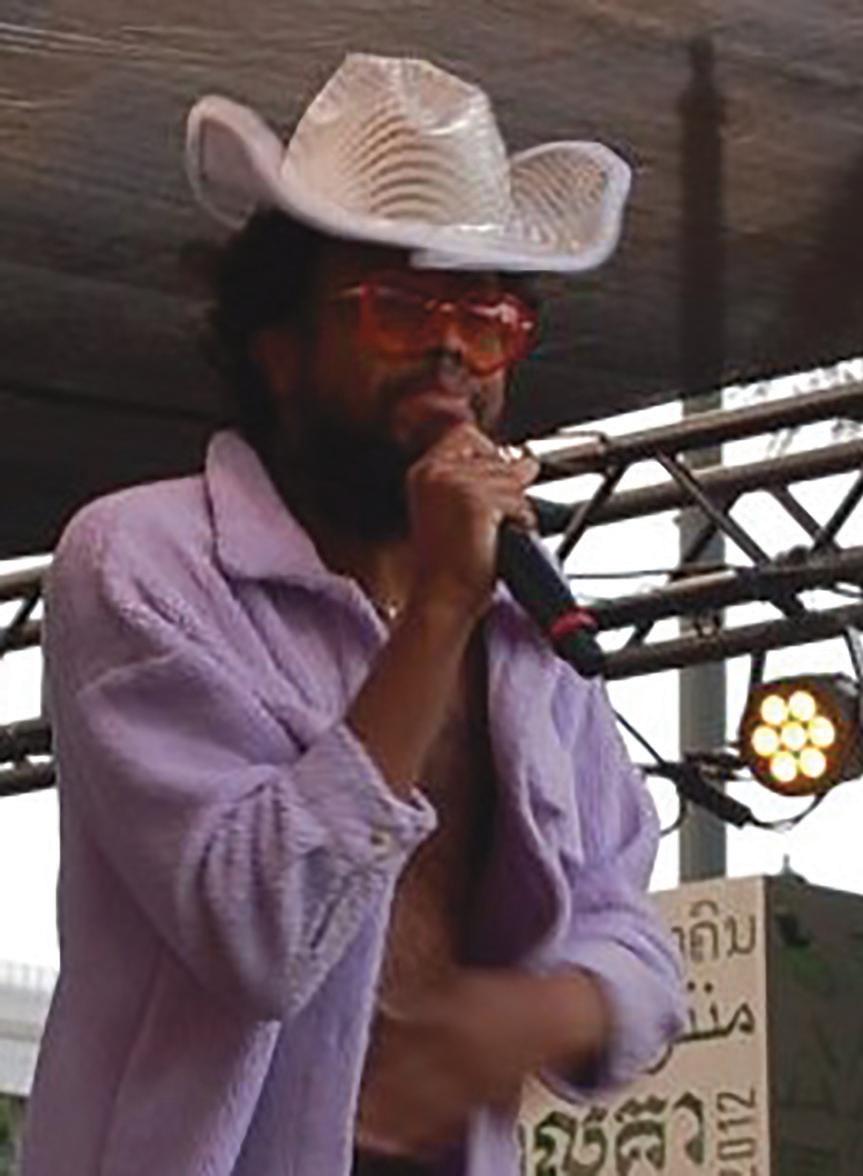
Tolliver kicked off the live performances with his Gospel tinged, soulful voice styling. Tolliver had the audi ence grooving throughout his set, as he performed material from his debut EP- Daddyland. Highlights featured “Say What,” “Worth It,” and “Thrash.”
Maya Jupiter graced the stage for a dazzling performance. Maya Jupiter had the crowd vibing through out her crowd pleasing set. The songs from her previously released EP’s resonated with the large crowd. Maya contin ues to explore theme that intersect feminism, activism, and revolutionary motherhood in her music. She is currently working on an EP produced by Georgia Ann Muldrow, another legendary vocalist in her own right. Maya per formed “I Am,” “Shake,” “Crumble,” “Inshallah,” “Rico,” and “Madre Tierra.”
The celebration continued. Boogaloo Assassins brought on the heat, as they thrilled the crowd with some contagious Latin Boogaloo, Soul and Salsa, to the delight of the Salseros in the house. The crowd responded favor ably to “No, No, No,” a Latin-tinged cover version of the popular reggae song by Dawn Penn of Jamaica. This song took radio and dancehalls around the world by storm.
Las Cafeteras closed out the celebration with a rockin’ energetic set of original songs with a positive, up beat, thought-provoking message. Las Cafeteras sang in English, Spanish, and Spanglish and melded styles, from rock to hip-hop to rancheras. Las Cafeteras use music as a vehicle to build bridges among different cultures and com munities, and create “a world where many worlds fit.”
Visit and bookmark https://grandparkla.org and https://www.musiccenter.org to be the first on your block to find out about exciting events planned for the remainder of the year.
By Ricky Richardson Contributing Writer (Los Angeles, Ca.)- Thousands of party people, from all walks of life, came together in Grand Park in Down town Los Angeles, Saturday, October 8, 2022.
The occasion, Grand Park, powered by The Music Center, celebrated its yearlong live music performances, innovative art installations, wellness workshops, activities and more.
The two-day celebration, held October 8-9, 2022, highlighted the signature free events that laid the founda tion over the past decade for Grand Park to become L.A.’s central gathering place and honors the legacy of perform ers, artists, community partners, audiences and parkgoers who helped to shape Grand Park as the place for everyone, a cultural destination.
I was fortunate to attend many of the signature events in Grand Park over the decade. Grand Park Book Festival, 4th of July Celebration, Dia De Los Muertos, and New
Year’s Eve Celebration. In addition, Grand Park hosted events produced by outside organizers, Gospel Festival and Salsa Festival in conjunction with the Salsa Congress, to name a few.
The Block 4 Event Lawn was the site for the evening concert in Grand Park. The concert featured live perfor mances by longtime global music artists, and partners who have filled Grand Park with their unique sounds over the past 10 years.
Julia Diamond, Grand Park Director and Dawn Rob inson-Patrick, Grand Park Senior Programming Manager enthusiastically welcome the early arrivals to the park and gave a brief history of Grand Park and mentioned some of the signature events held annually in Grand Park.
Anthony Valadez and Novena Carmel hosted the fourhour music festival with performances by Tolliver, Booga loo Assassins, Maya Jupiter, and Las Cafeteras. Anthony Valadez and Novena Carmel alternated on holding down the control panels of the ones and twos.
Novena Carmel, the daughter of music royalty, Sly
